Few palettes rival the crisp drama of a black and white living room. Designers prize the duet because it feels simultaneously modern and timeless, letting architecture, texture, and collected pieces shine. Recent trend round-ups show monochrome rooms outperforming colorful ones in both digital saves and real-estate listings, proving the scheme’s broad appeal. Yet success hinges on more than picking two paint cans; contrast must be balanced with warmth, rhythm, and personality. Below you’ll discover twenty field-tested ideas—each drawn from fresh professional projects—that make a high-contrast palette feel livable, inviting, and uniquely yours. Enjoy the possibilities and let the next paragraph spark your creativity.
1. High-Contrast Foundations Shape the Living Room
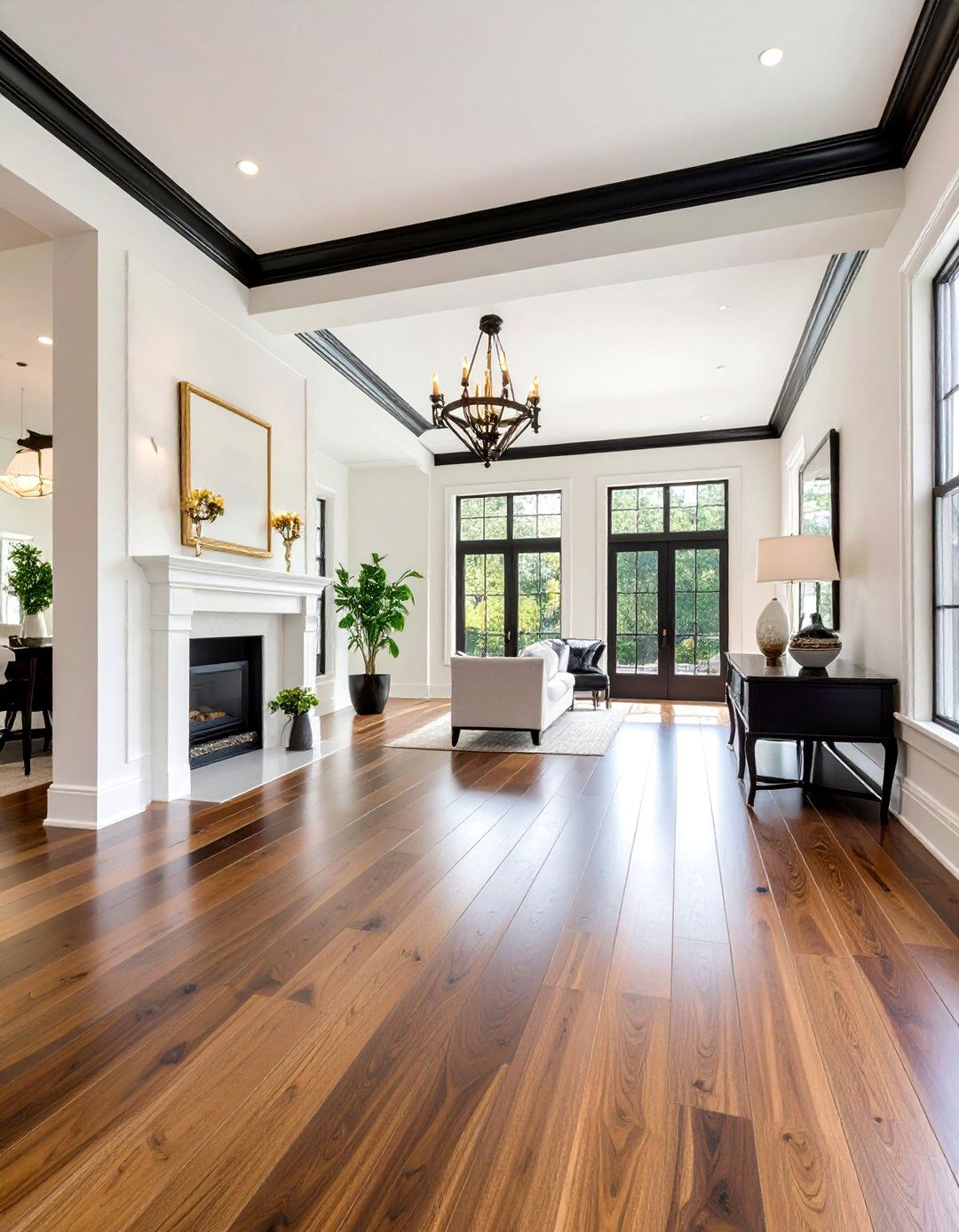
A deliberate shell sets the tone. A newly refinished ebony floor instantly grounds a black and white living room, while gallery-bright walls bounce daylight deeper into the space. Pair that duo with snow-white baseboards and a slim ink-black picture rail to unify odd alcoves or nooks without heavy construction. Designers suggest selecting one dominant color—usually white—to prevent visual claustrophobia, then repeating the darker shade three to five times at eye level so the contrast feels intentional. Finish with a cloud-white ceiling so the eye gets a restful pause overhead. With this envelope set, decorating choices become far more intuitive.
2. Layer Textures to Warm the Living Room
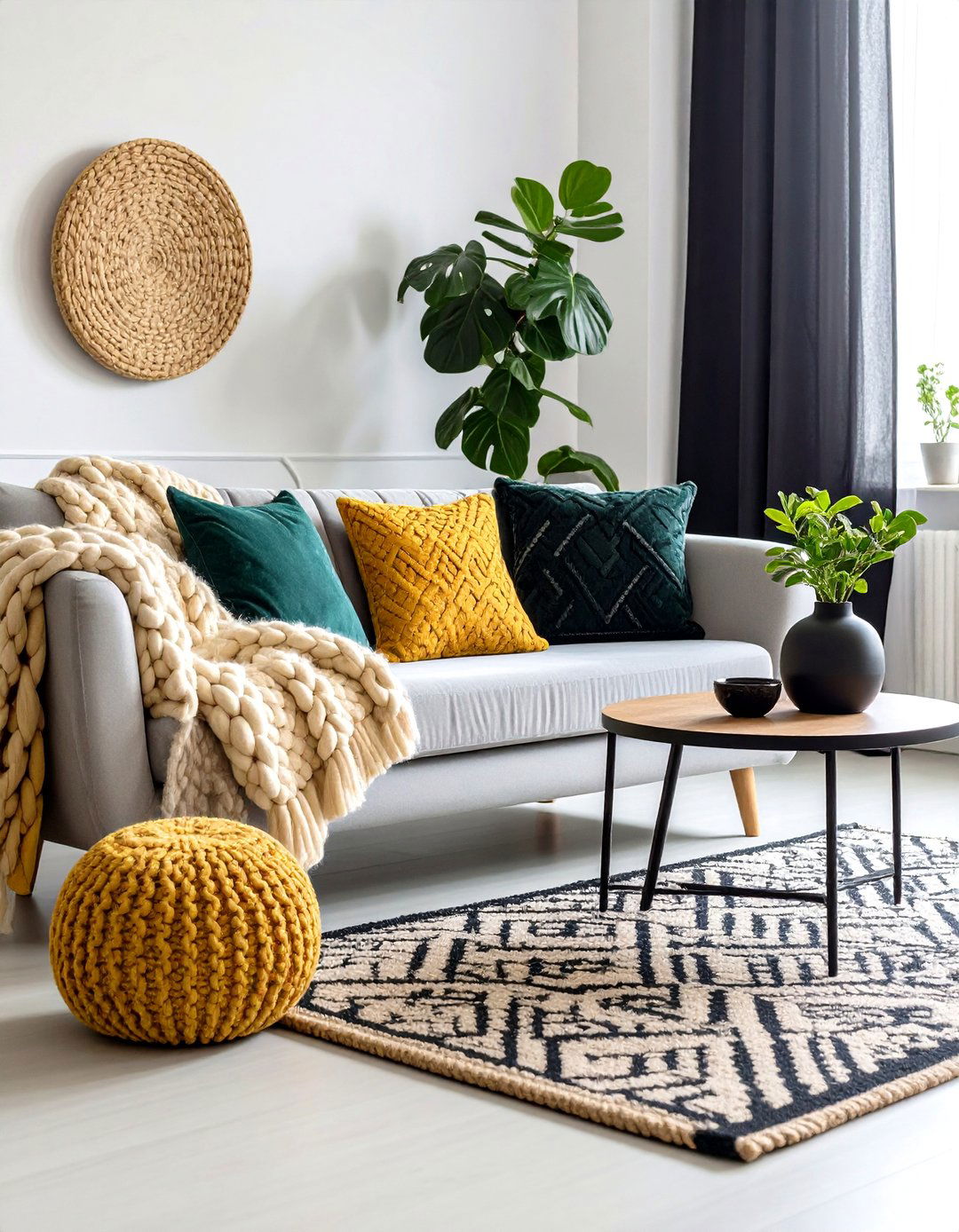
Unlike multicolored schemes, a monochrome palette depends on touch. With cozy bouclé, chunky knits, ribbed ceramics, and nubby jute, texture supplies the dimension missing from hue in a black and white living room. Interior stylists recommend mixing at least three tactile finishes—smooth leather, matte linen, and high-pile wool, for instance—to avoid the clinical vibe that high contrast can create. Aim for one lustrous surface per grouping—perhaps a glazed planter—so light has something to dance upon. Textural layering not only reads inviting but also absorbs sound, making conversation easier and the atmosphere cocoon-like. Guests will instinctively reach out to explore the varied surfaces.
3. Oversized Artwork Elevates Living Room Walls
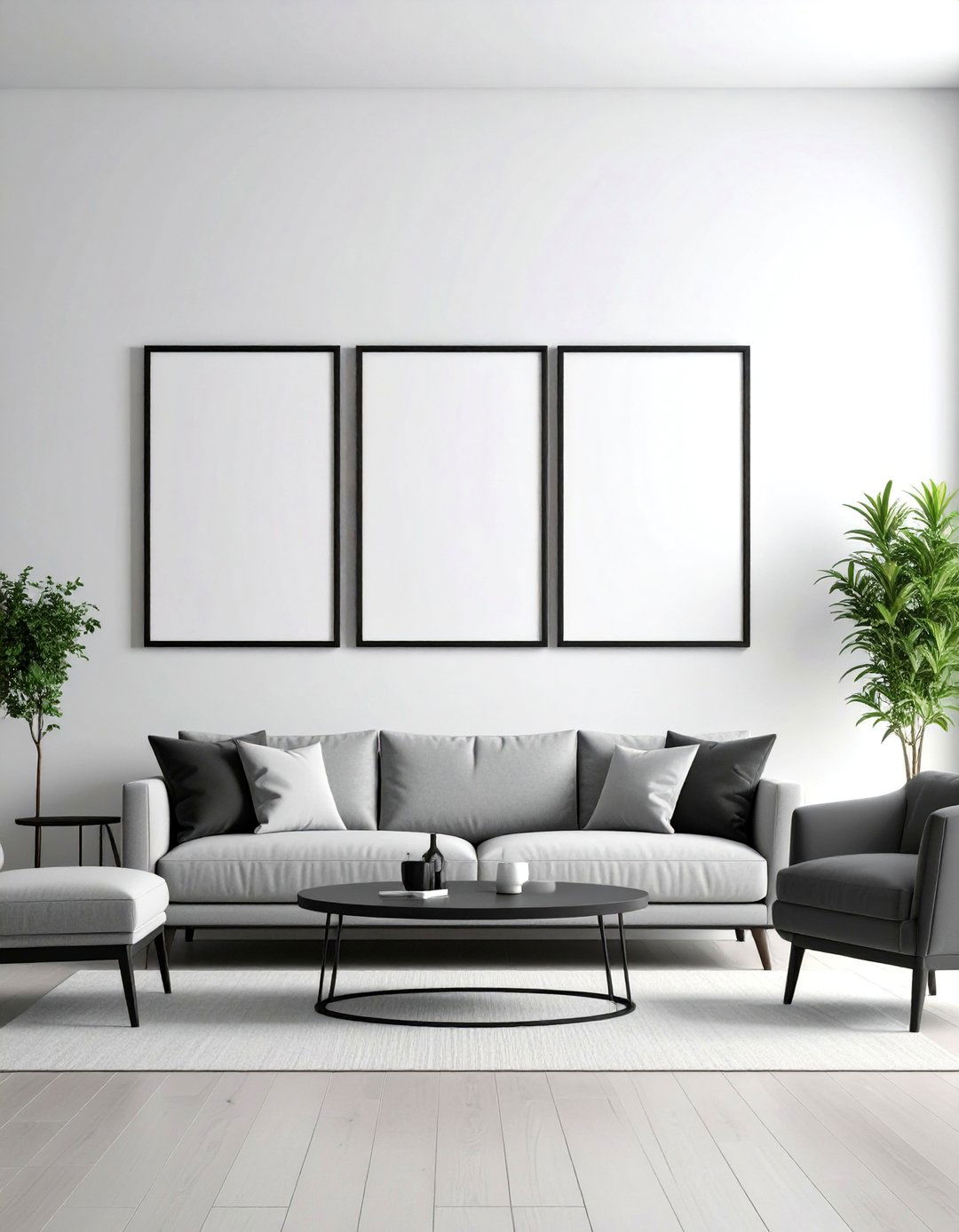
Looking for an instant focal point? Hang a single overscale canvas in grayscale or a bold graphic print so the eye rises and the black and white living room feels curated rather than stark. The Spruce notes that large-scale art absorbs empty wall acreage, minimizing the urge to scatter small frames that can dilute impact. Float the piece slightly lower than you would in a color-heavy scheme; dark-on-light edges read crisper and reward closer viewing. If budget is tight, consider a DIY black-and-white photograph printed at engineering size—a trick decorators use to cover big walls for minimal cost. An expressive frame in matte black crowns the statement.
4. Graphic Rugs Anchor an Open Living Room
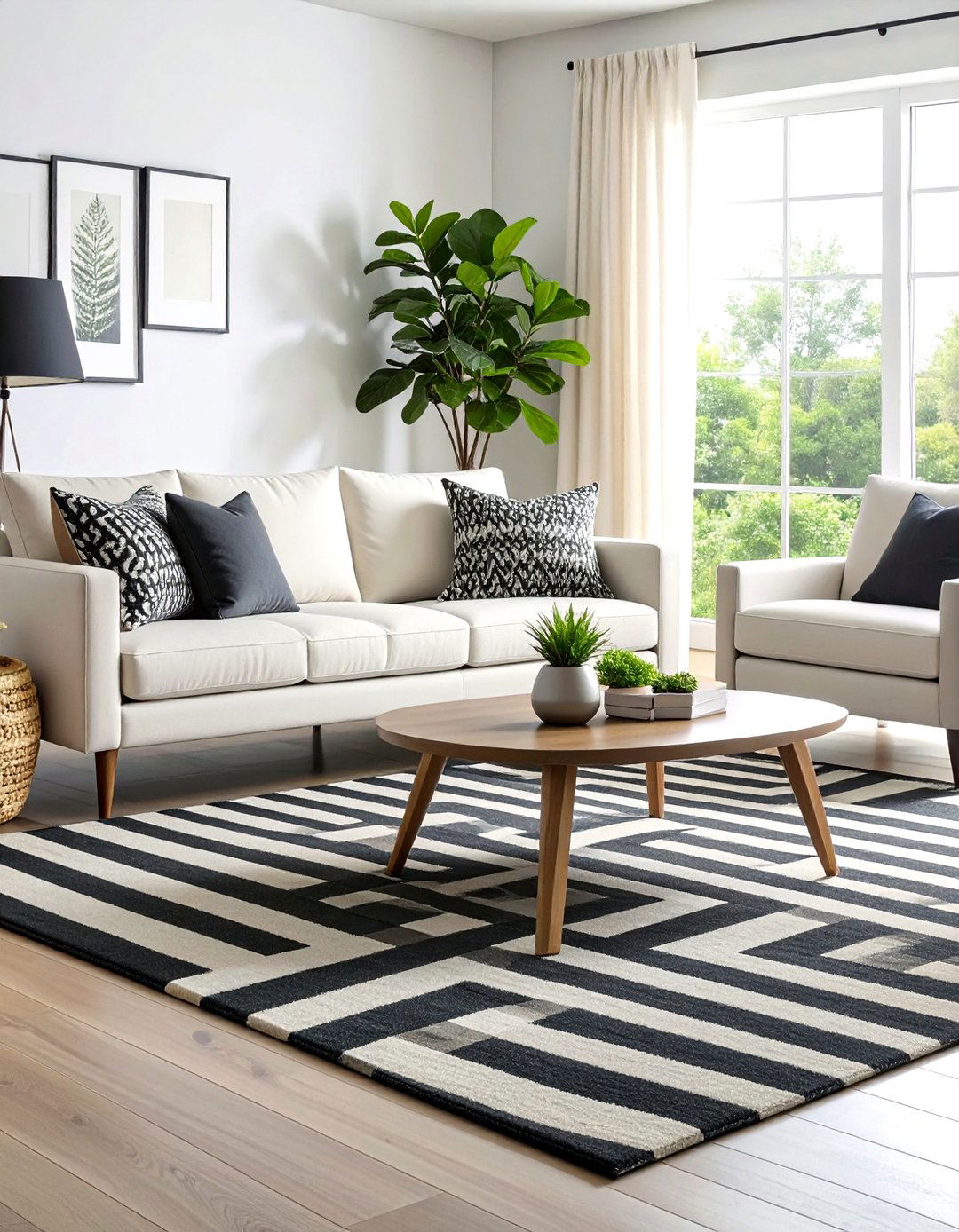
A rug acts like visual punctuation, helping furniture float instead of hugging perimeter walls. Bold stripes, chevrons, or tribal diamonds in black and white instantly map a living room’s seating zone and disguise everyday wear. Designers urge choosing patterns with at least thirty percent white so the floor doesn’t swallow daylight, then echoing one line weight in toss pillows for cohesion. Scale matters: in an average lounge, an 8 × 10 pattern lets the sofa’s front legs sit on the rug, making the arrangement feel intentional rather than accidental. A low coffee table with open legs keeps the print visible. For renters, a peel-and-stick vinyl rug offers similar impact minus commitment.
5. Natural Wood Accents Add Soft Contrast
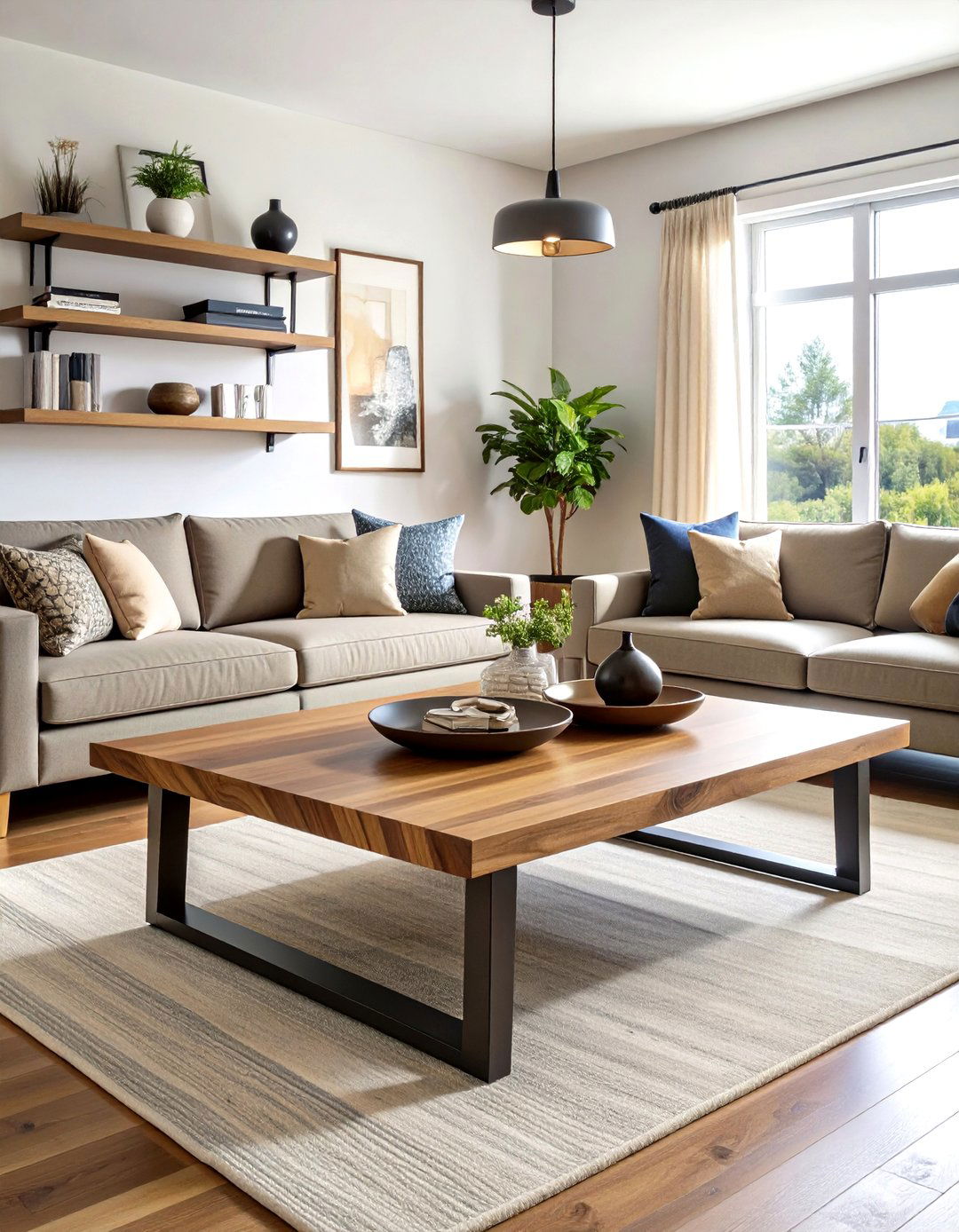
Despite intense duality, a black and white living room shouldn’t feel cold. Introducing medium-tone woods—walnut side tables, ash shelving, or oak frames—infuses organic warmth and breaks up high contrast without adding new colors. Trend forecasters point out that even a single live-edge coffee table can shift the atmosphere from gallery to lounge, encouraging people to linger. Leave timber finishes matte and pair them with charcoal metal hardware so the material stands proud rather than ornamental. Wood grain’s subtle movement also mimics pattern, giving the eye another gentle texture. Over time, patina on handles and edges will only enrich the story.
6. Metallic Glints Heighten Evening Glamour
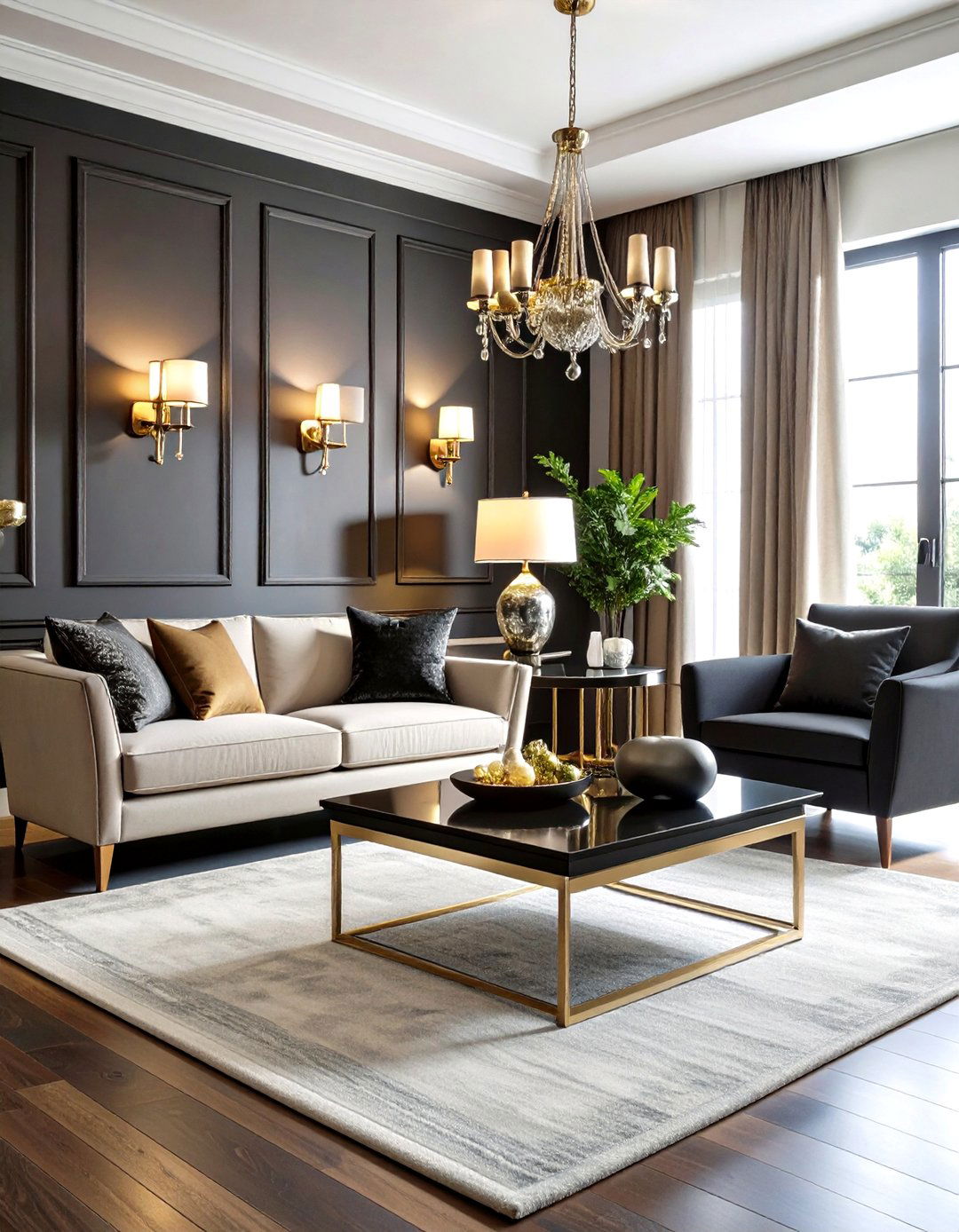
As daylight fades, reflective metals enliven a monochrome palette. Polished chrome floor lamps, aged brass sconces, or a nickel cocktail table scatter pinpoints of light across a black and white living room, countering any nighttime heaviness. Designers recommend sticking to one metal family so sparkle reads intentional; repeat it three times—lamp base, mirror frame, tray—for rhythm. Combine shiny accents with matte black candlesticks to accentuate gleam by contrast. Dimmable bulbs aimed toward walls rather than faces bounce flattering luminance, proving that shimmer can be practical and not merely decorative. This touch of glamour makes evenings feel celebratory without overwhelming daily function.
7. Geometric Patterns Energize the Living Room

By introducing geometry through pillows, window treatments, or accent chairs, you create movement without abandoning monochrome discipline. Horizontal stripes elongate small living rooms, while houndstooth or hexagon prints deliver classic edge that survives trend cycles. Use no more than two different motifs and vary their scale—one large, one small—to prevent visual chatter. The Spruce advises reserving the busiest pattern for a low-traffic object, like drapery, so maintenance stays easy. Repeat a thin black line elsewhere—perhaps a chair rail—to connect motifs. This strategy brings energy to the eye while keeping the palette honest.
8. Layered Lighting Sculpts After-Dark Ambience
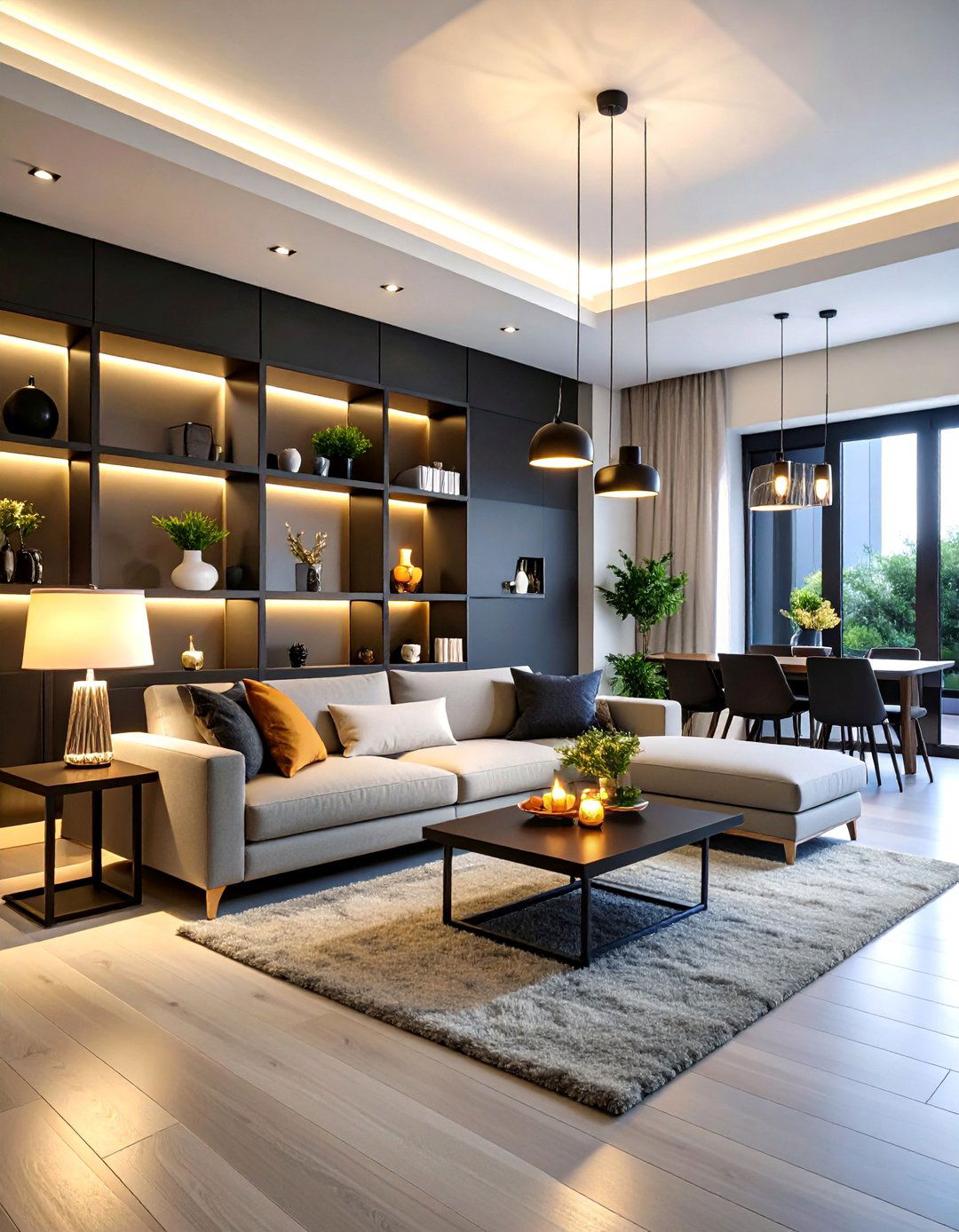
To avoid the harshness that a single overhead fixture can cast on black surfaces, plan three tiers of lighting—ambient, task, and accent—for the living room. Mixing wall washers, table lamps, and a dimmable ceiling fixture allows the space to glow rather than glare. Contrast-heavy rooms need soft edges at night, so choose bulbs around 2700–3000 K; the warmth keeps white tones creamy instead of blue. Reflective metal shades or glossy black drum pendants double luminous output for energy savings. Finally, add candles or LED strips behind shelves to give décor a halo and deepen perceived depth.
9. Architectural Lines Take Center Stage
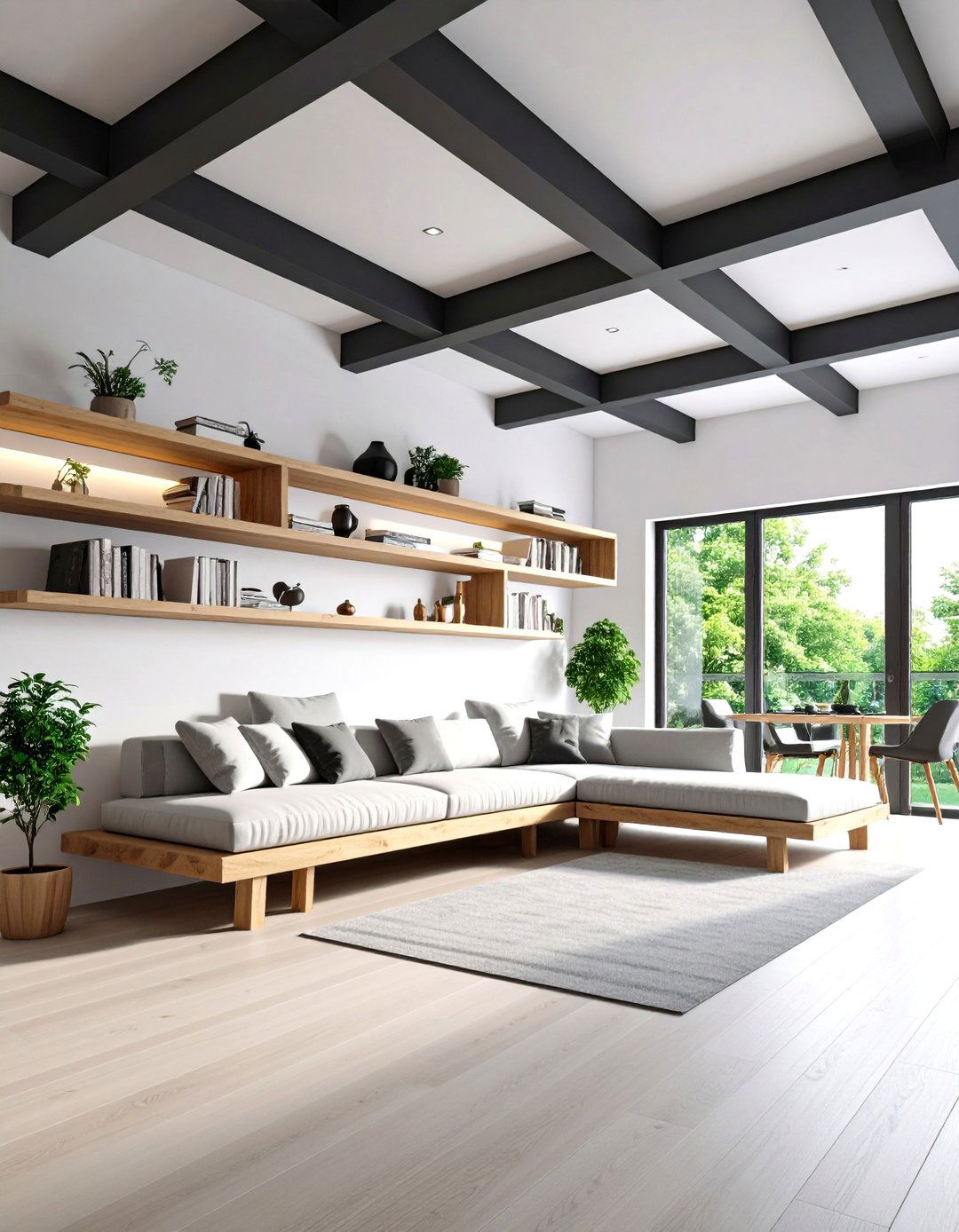
Clean silhouettes are a black and white living room’s secret storytelling device. Scandinavian designers emphasize crisp horizontals—low benches, linear shelving—that mirror window mullions and make spaces feel ordered. Dark ceiling beams painted to match a charcoal sofa can pull attention upward without introducing new materials. Paint gaps between built-ins white so shelves seem to float, enhancing architectural rhythm. The clearer the lines, the grander even compact rooms appear.
10. Scandinavian Simplicity Calms the Living Room
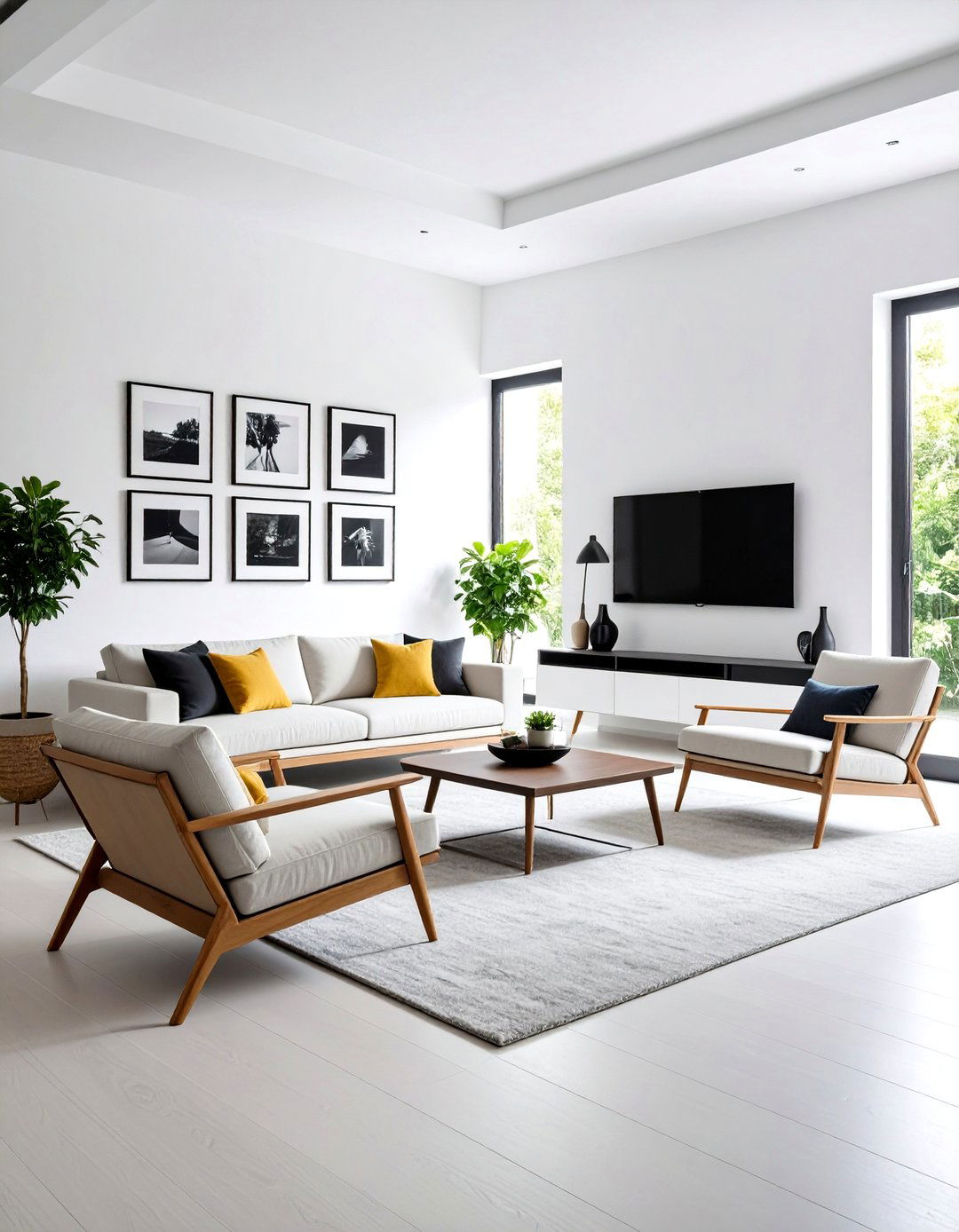
Borrowing from Nordic aesthetics, keep furniture silhouettes spare: think armless loungers, tapered-leg nesting tables, and floating media consoles. When combined with abundant daylight and white walls, the look delivers serenity while black accents supply graphic punctuation. Choose tactile textiles—bouclé, wool felt—to prevent chill. A single black-and-white photo gallery, hung in regimented rows, satisfies minimalism’s love of order yet offers personal storytelling. The result is a living room where the pulse slows but never slips into monotony.
11. Art Deco Drama Ups the Living Room’s Swagger

Curved ivory bouclé sofas, stepped mirrors, and a striped black-and-white rug nod to Art Deco glamour without kitsch. Combine glossy lacquered side tables with geometric brass lighting for a dose of 1920s optimism. Paint an accent wall deep charcoal to make metal and glass sparkle. Keep ornamentation disciplined: symmetry, not excess, defines the style. In a black and white living room, those Deco cues read confident and still fresh nearly a century on.
12. Minimalist Furniture Lets the Palette Breathe

Surprisingly, less furniture can make a black and white living room feel both bigger and cozier because negative space turns into a design component. Curators of modern monochrome interiors favor low-profile sectionals with thin arms and integrated storage ottomans, ensuring flow remains unobstructed. Architectural Digest suggests dressing shelves in staggered clusters rather than filling every inch, so the eye gets quiet pauses between contrasts. Combine that restraint with smart multifunctional pieces—a nesting side table, a fold-away bench—for everyday adaptability.
13. Greenery Brings the Living Room to Life
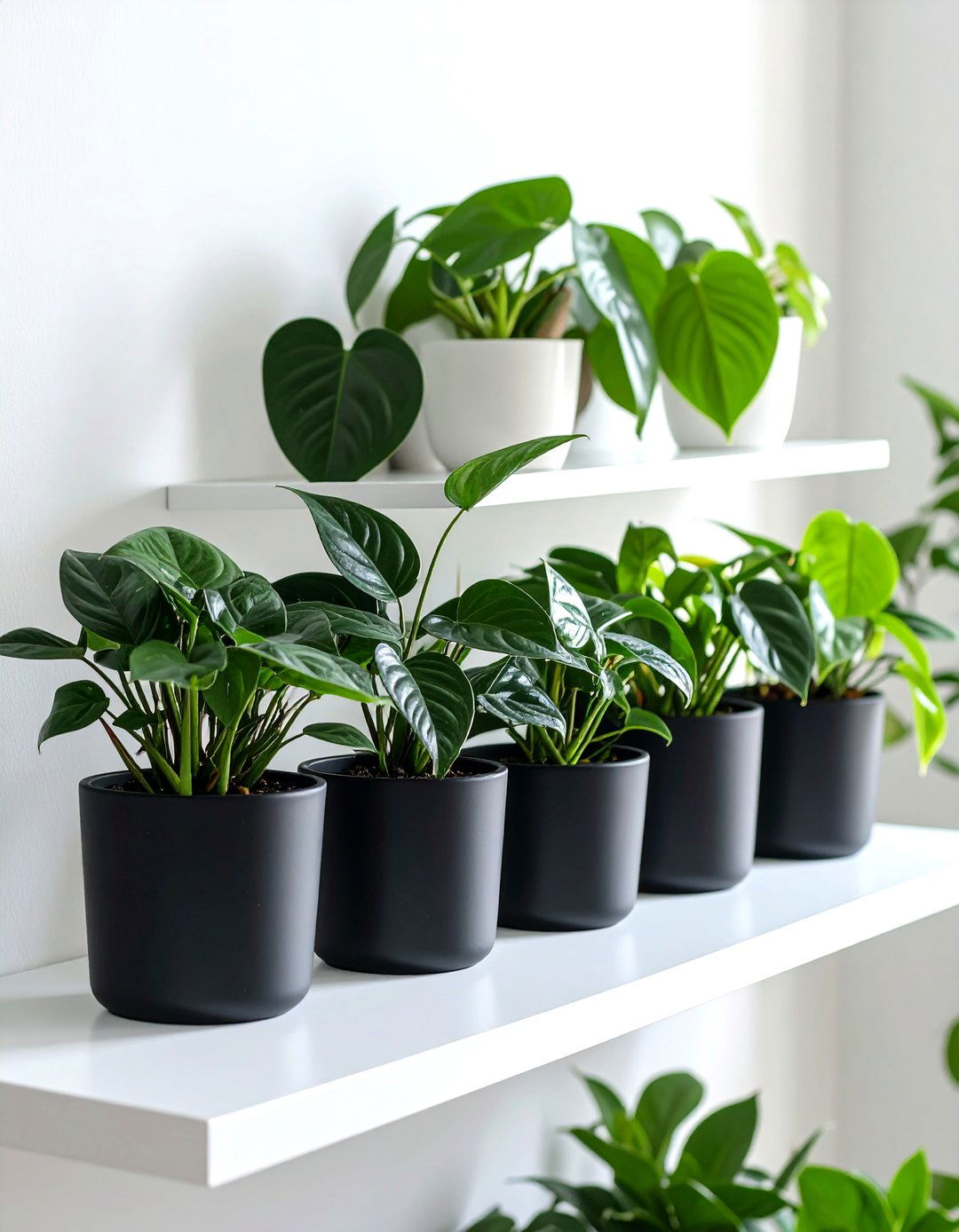
A burst of plant life is the quickest route to soften stark contrasts. Dark leafy rubber plants read sculptural against white walls, while trailing pothos warms black cabinetry without introducing new color families. The Spruce recommends grouping planters in odd numbers and choosing matte black pots so greenery remains the hero. For drama, a towering fiddle-leaf fig can rise behind a sofa, creating living art. Beyond aesthetics, foliage boosts humidity and air quality—benefits guests will literally feel.
14. Classic Checkered Floors Reinvent the Living Room

Installing twelve-inch square tiles in alternating black and white grants an instant sense of history and movement. Designers tout this classic checkered pattern as a budget-friendly way to disguise uneven foundations while gifting the living room Parisian café charm. Use high-contrast grout to sharpen edges or color-match for subtlety. If cold floors concern you, float a plush wool rug above focused on white stripes for warmth. The result merges old-world elegance with modern comfort in one memorable gesture.
15. Strategic Color Pops Highlight Contrast
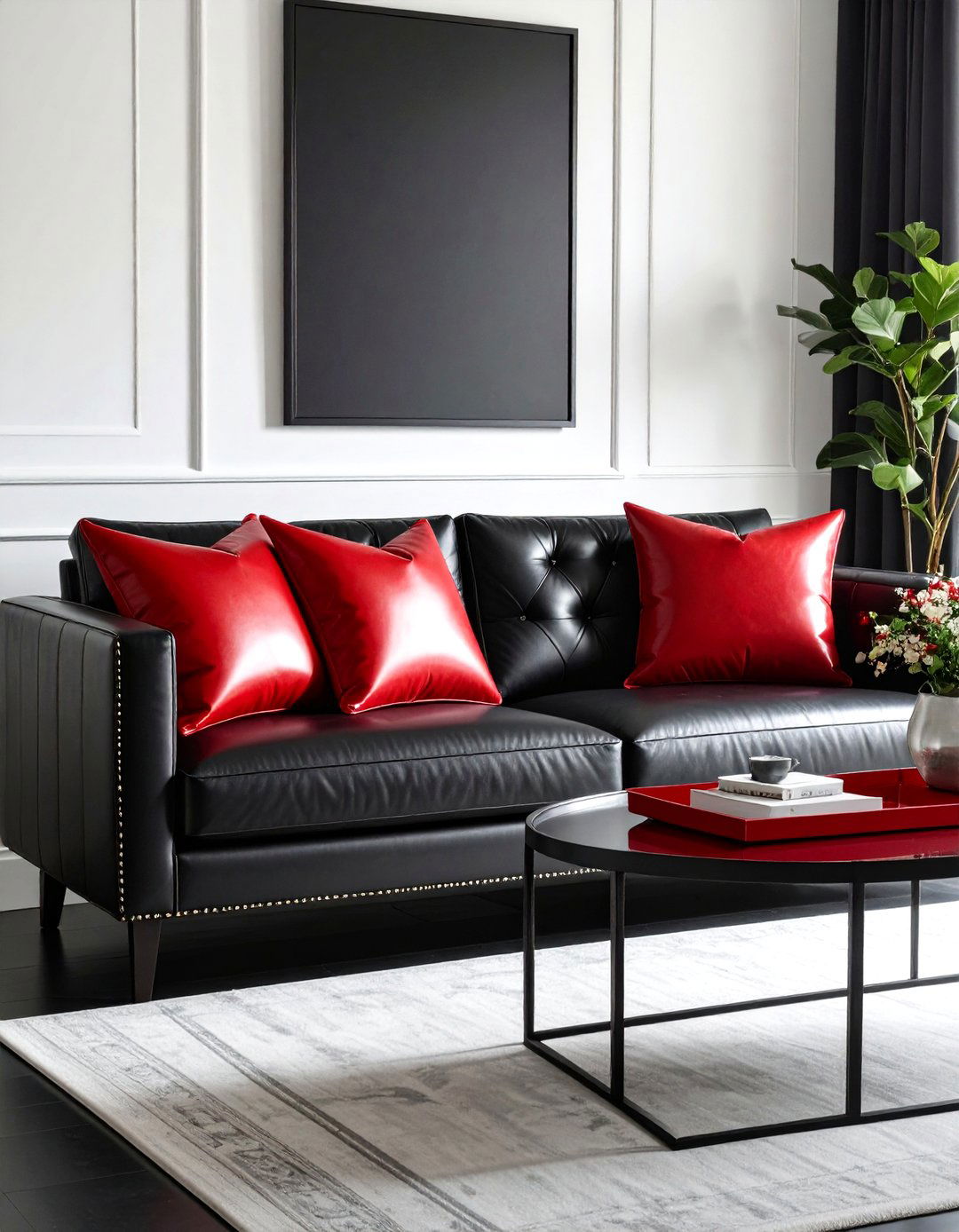
Although purists stick to two tones, a single accent hue can amplify the drama. Experts suggest lime green, cobalt, or cherry red because their saturation stands up to black without muddying white. An accent pillow or lacquered tray is enough; repeating it once more—say, in artwork—locks the palette together. Instagram-loved rooms often employ glossy red leather cushions against monochrome upholstery for a note of rebellious energy. Keep the pop in no more than five percent of the room’s visual footprint so the scheme stays disciplined.
16. Vintage Mid-Century Pieces Ground the Living Room
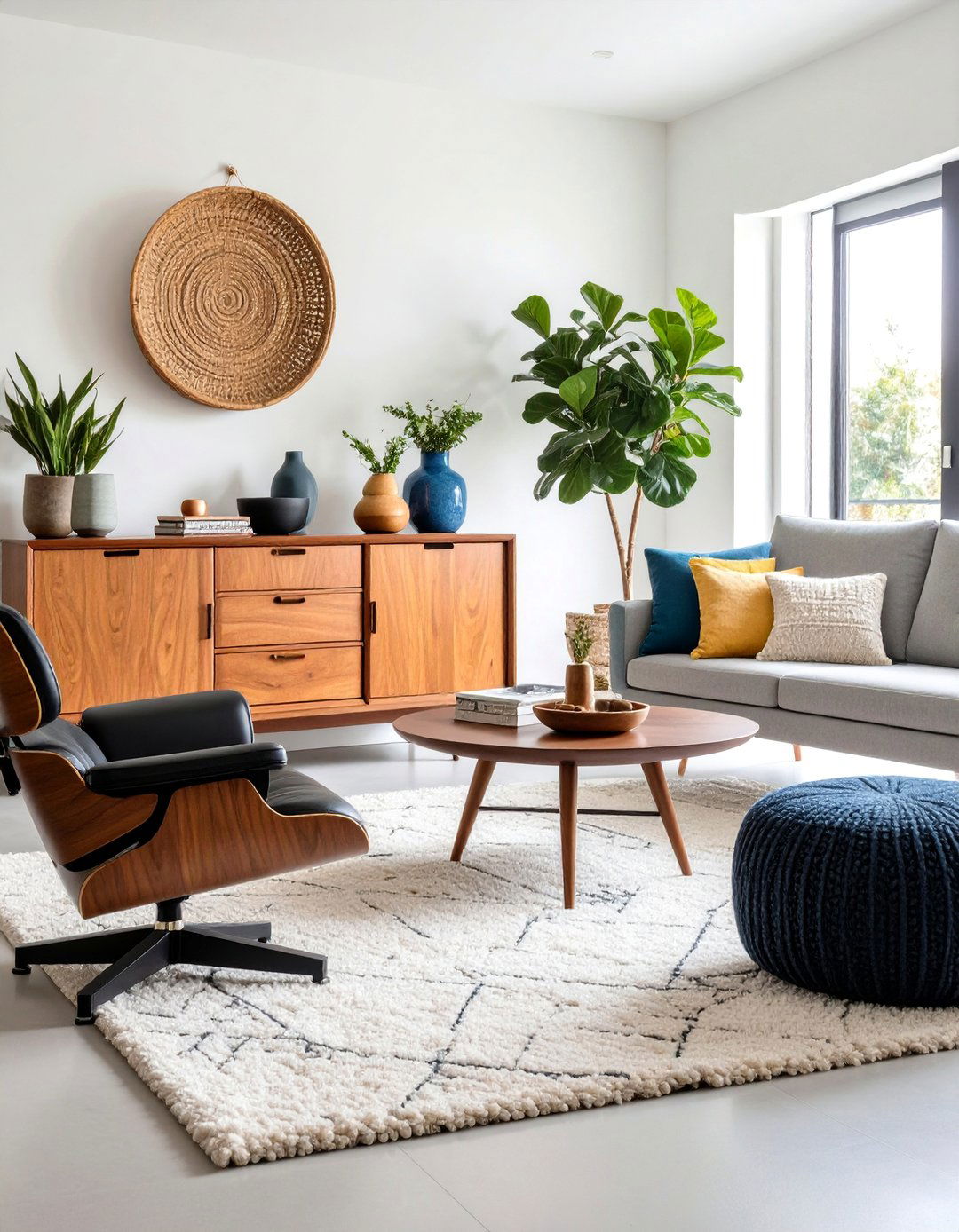
Mid-century silhouettes—think rosewood credenzas, Saarinen tulip tables, and black leather Eames loungers—inject heritage into a contemporary black and white living room. Their organic curves temper sharp contrasts while authentic patina prevents the space from feeling showroom-new. Mix grainy woods with matte-black steel lamps to bridge eras. Upholster cushions in off-white tweed for tactile depth. Layering history this way signals refined taste and sparks conversation.
17. Negative Space Amplifies Visual Rest
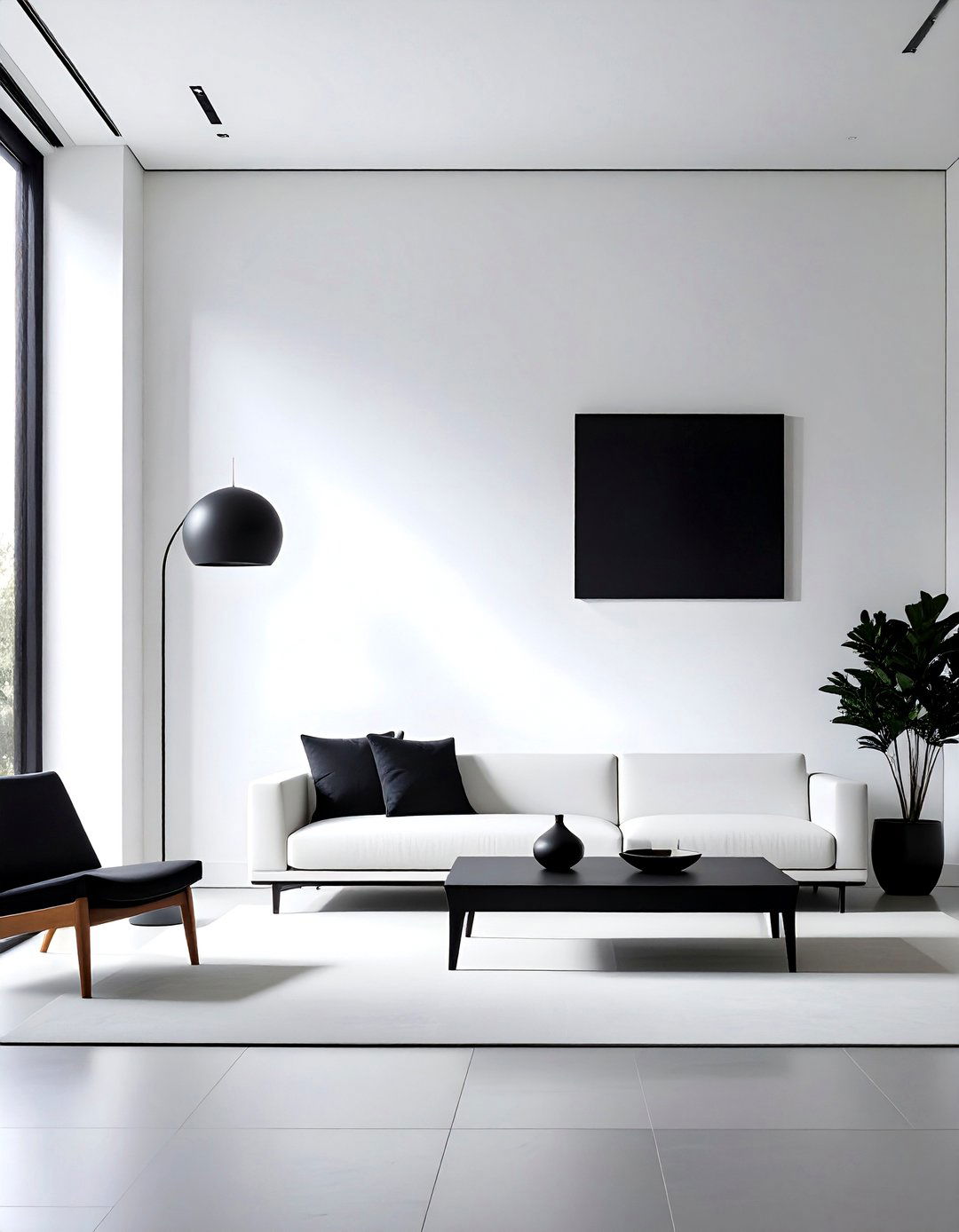
Designers often treat white walls as breathing room so black accents read crisp, much like margins around printed text. Architectural photographers note that empty zones let the mind process contrast comfortably, preventing sensory fatigue in a black and white living room. Leave at least one expanse free of art to let daylight dance unencumbered. When the urge to fill surfaces arises, remember that restraint is a design decision, not a lack thereof.
18. Black Trim Frames the Living Room
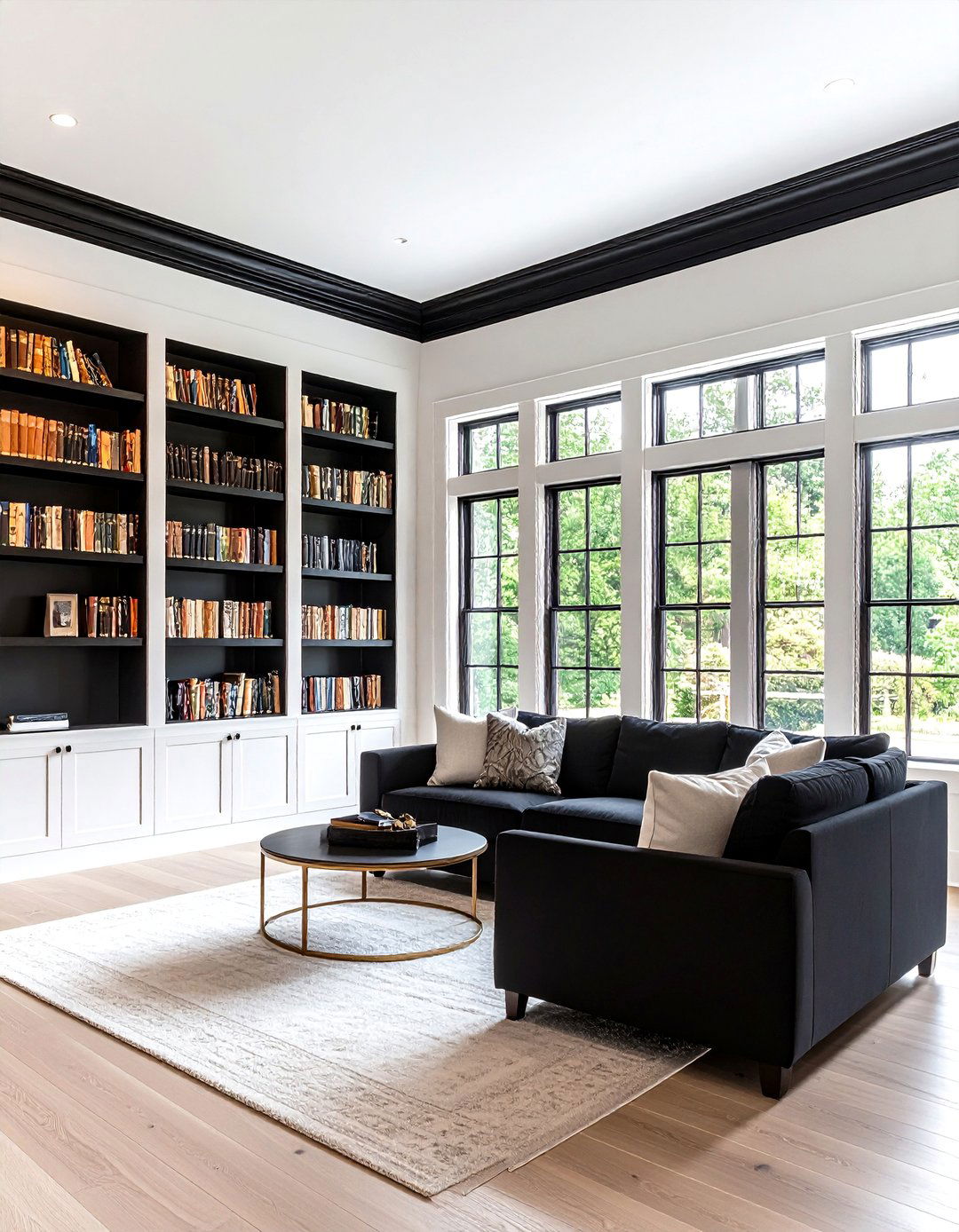
Painting window casings, doorframes, or built-in bookcases jet black while keeping walls white frames architectural bones as cleanly as an ink drawing. This inexpensive weekend update elevates even builder-grade moldings and pairs well with hardware finished in the same dark tone to create a cohesive envelope. Finish with matching black curtain rods so functional details disappear into the frame, letting textiles stay centre stage.
19. Mix Matte and Gloss for Subtle Depth
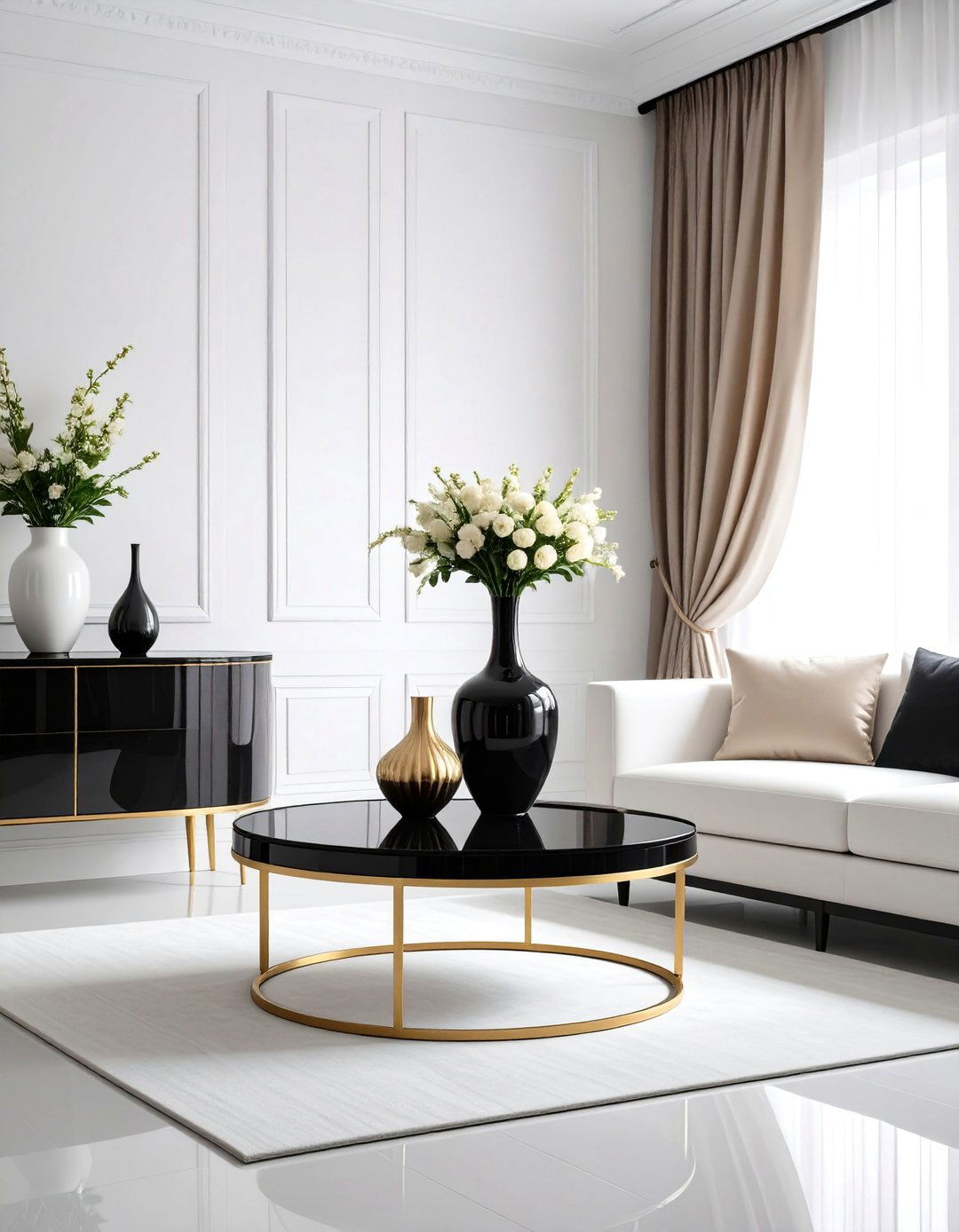
Owing to its binary palette, a black and white living room benefits immensely from varied sheen. Combine matte walls with high-gloss lacquered side tables or satin drapes with chalky ceramics so light dances across surfaces. Experts warn against using gloss on every element; reserving reflectivity for accents prevents glare and keeps fingerprints manageable. A single lacquered piano-black tray on a porous marble coffee table illustrates the delightful tension sheen can achieve.
20. Two-Tone Walls Define Functional Zones
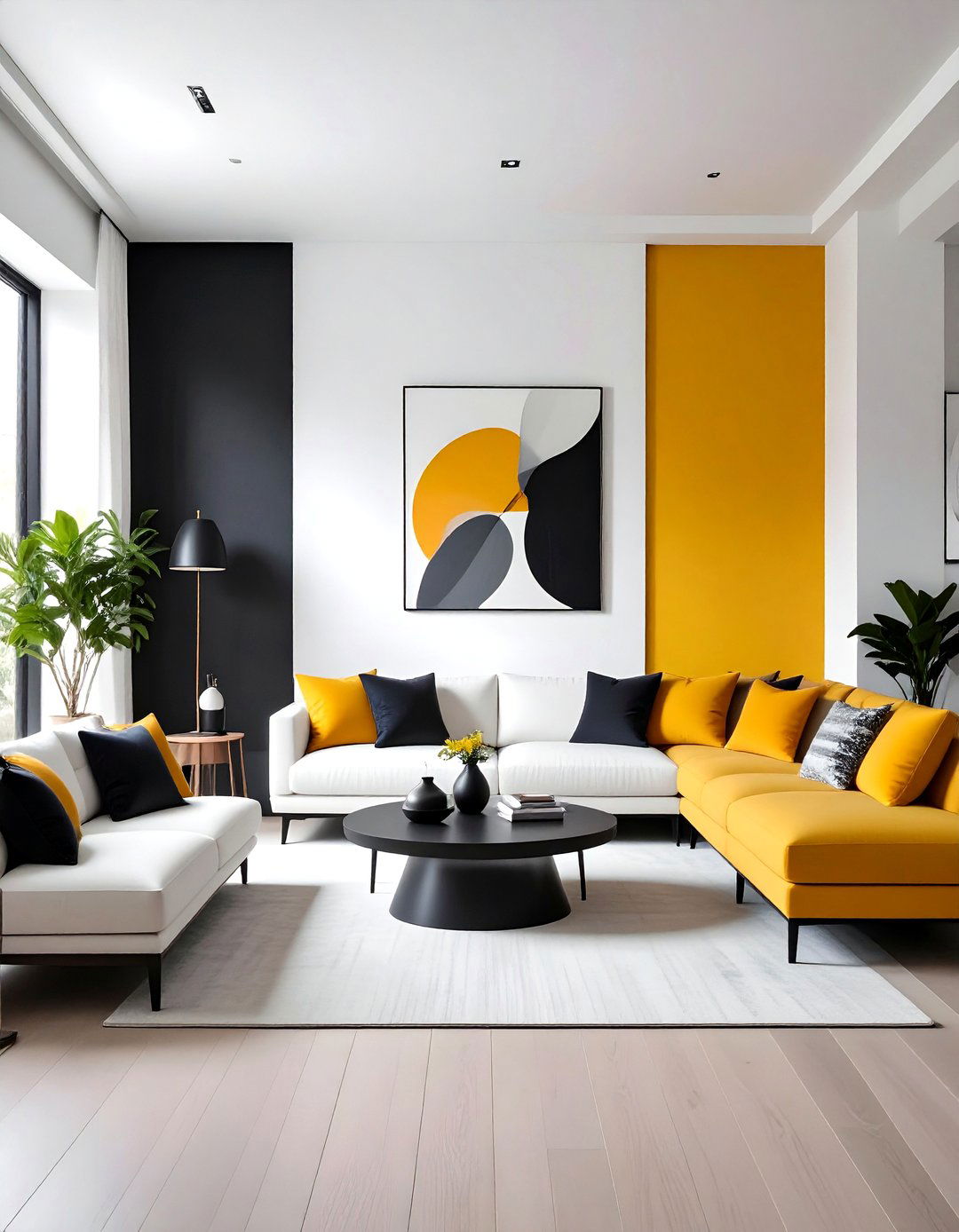
In lofts or open-plan homes, painting the lower third of the wall black and the upper portion white visually separates a living room from adjoining spaces without partitions. Align the horizontal line with window sills for architectural logic, then mount art so its midpoint straddles both colors, unifying the scheme. The technique doubles as scuff protection in busy households. For extra definition, run a narrow chair-rail molding along the divide and paint it crisp white so the transition looks intentional.
Conclusion:
Color may be absent, yet personality flourishes when contrast, texture, and thoughtful editing guide the design. From high-impact foundations to subtle sheen shifts, each black and white living room idea above demonstrates that limitations can liberate creativity. Designers and homeowners alike return to the palette because it evolves effortlessly: add a pop today, strip it back tomorrow, and the room still feels cohesive. Embrace the duet’s versatility, pair it with materials you love, and you’ll craft a setting that welcomes conversation, honors architecture, and remains striking long after fleeting trends fade.


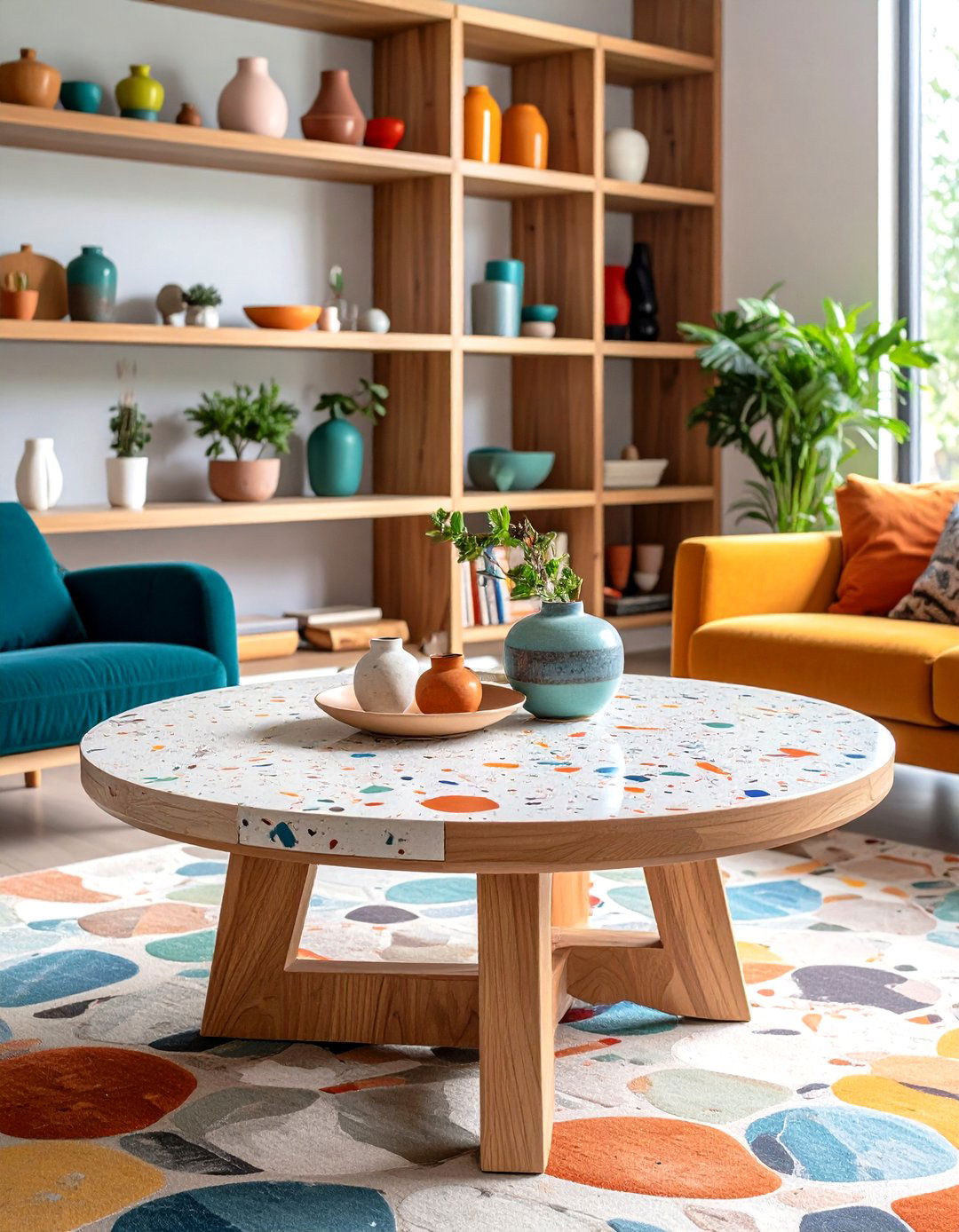
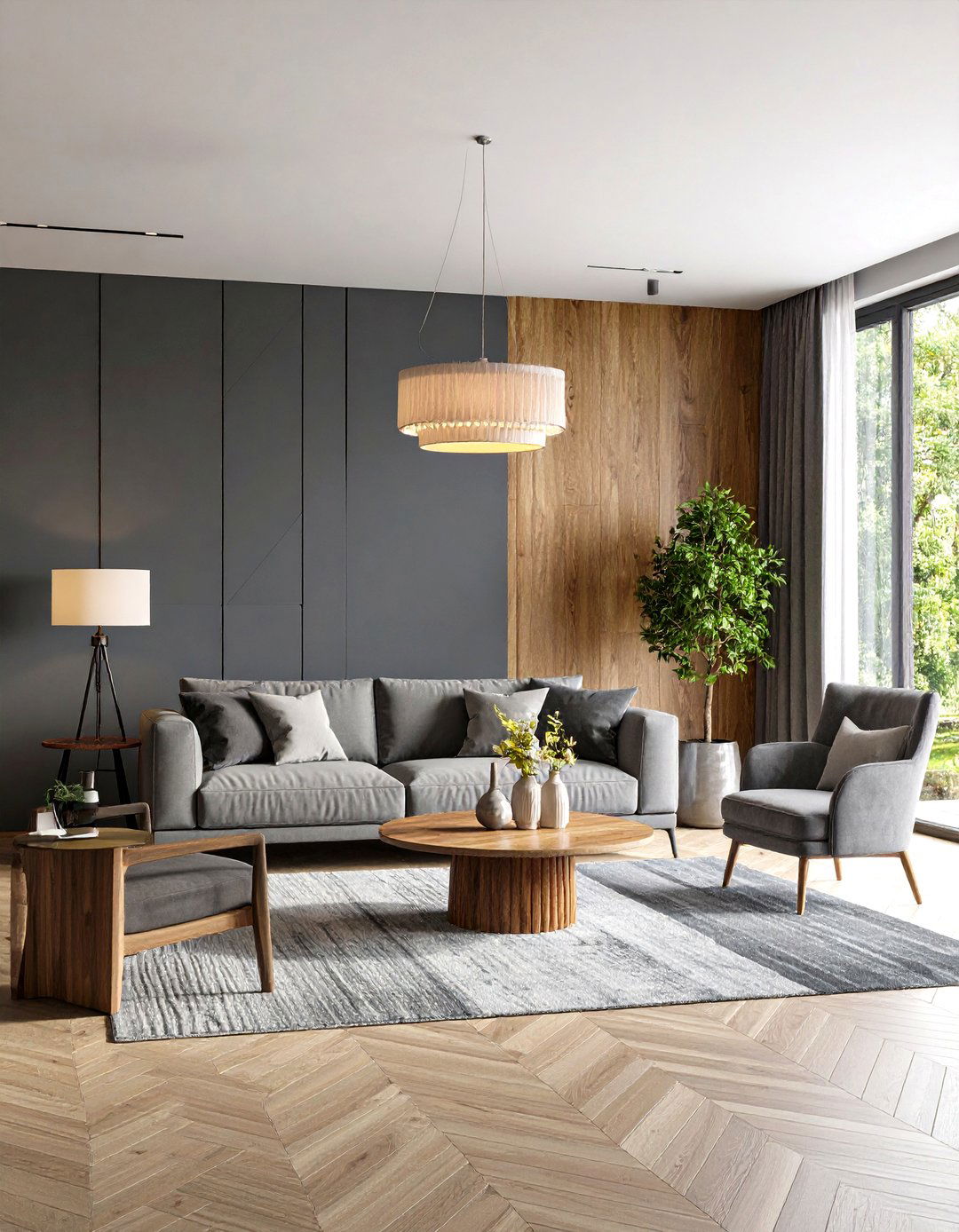
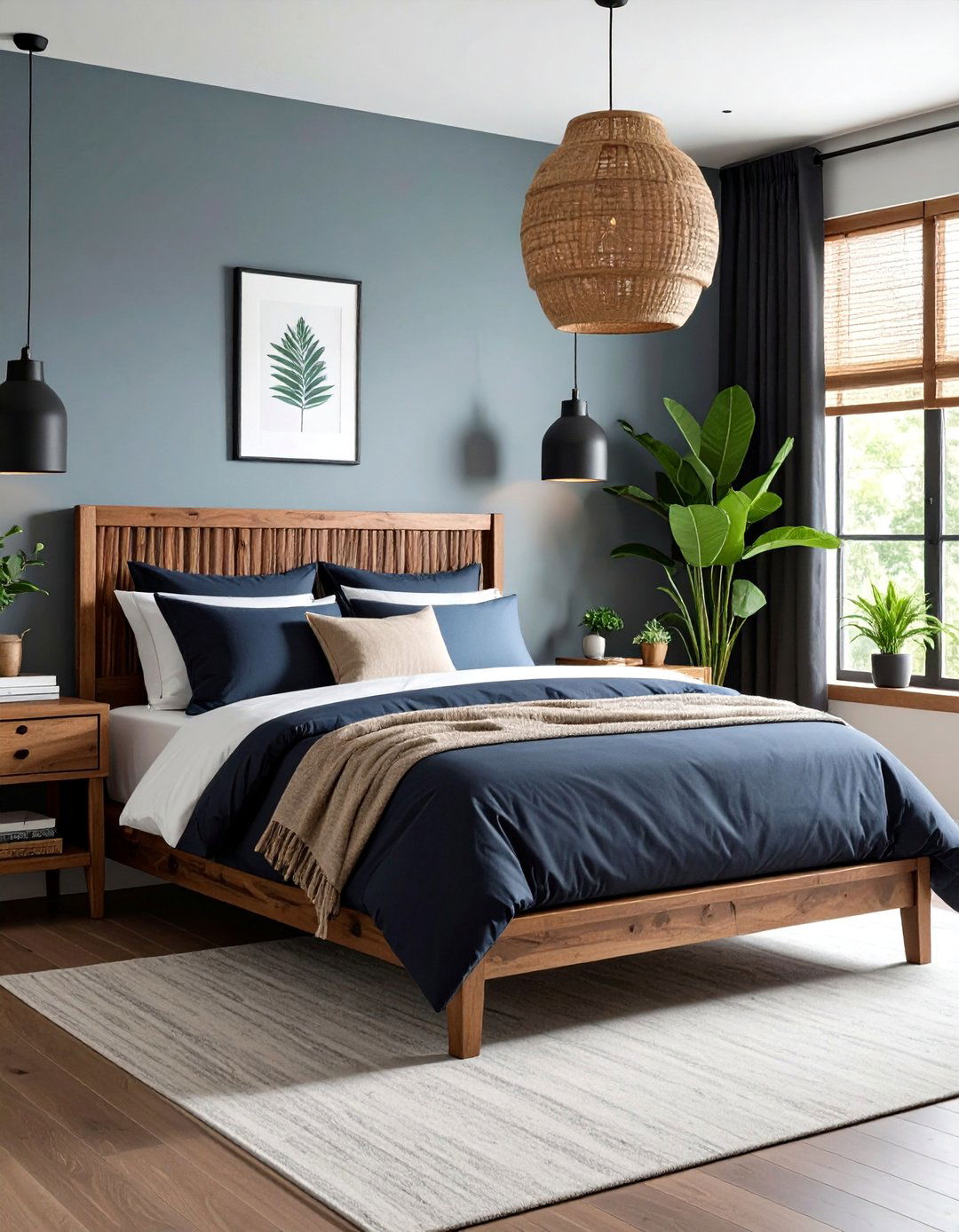

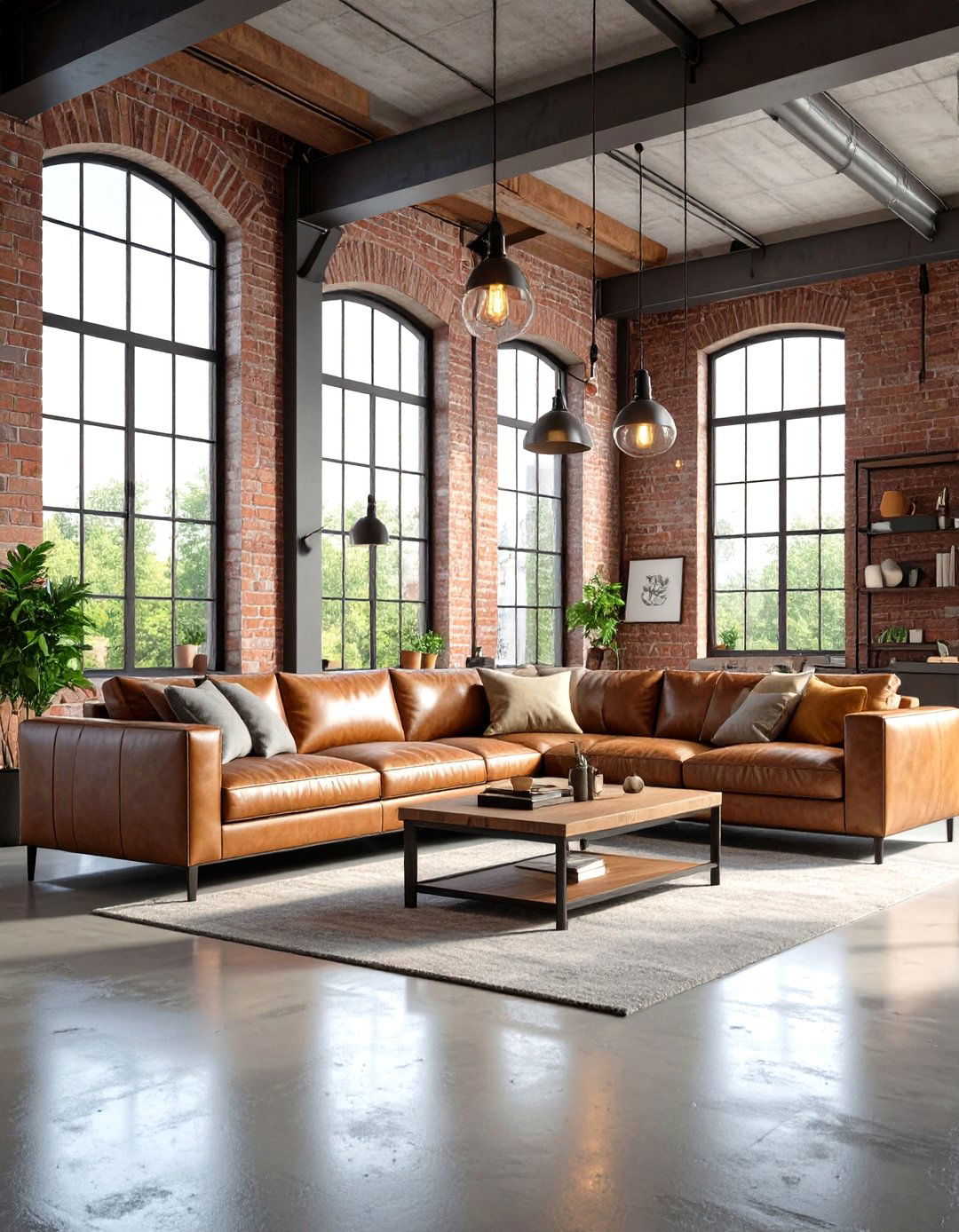

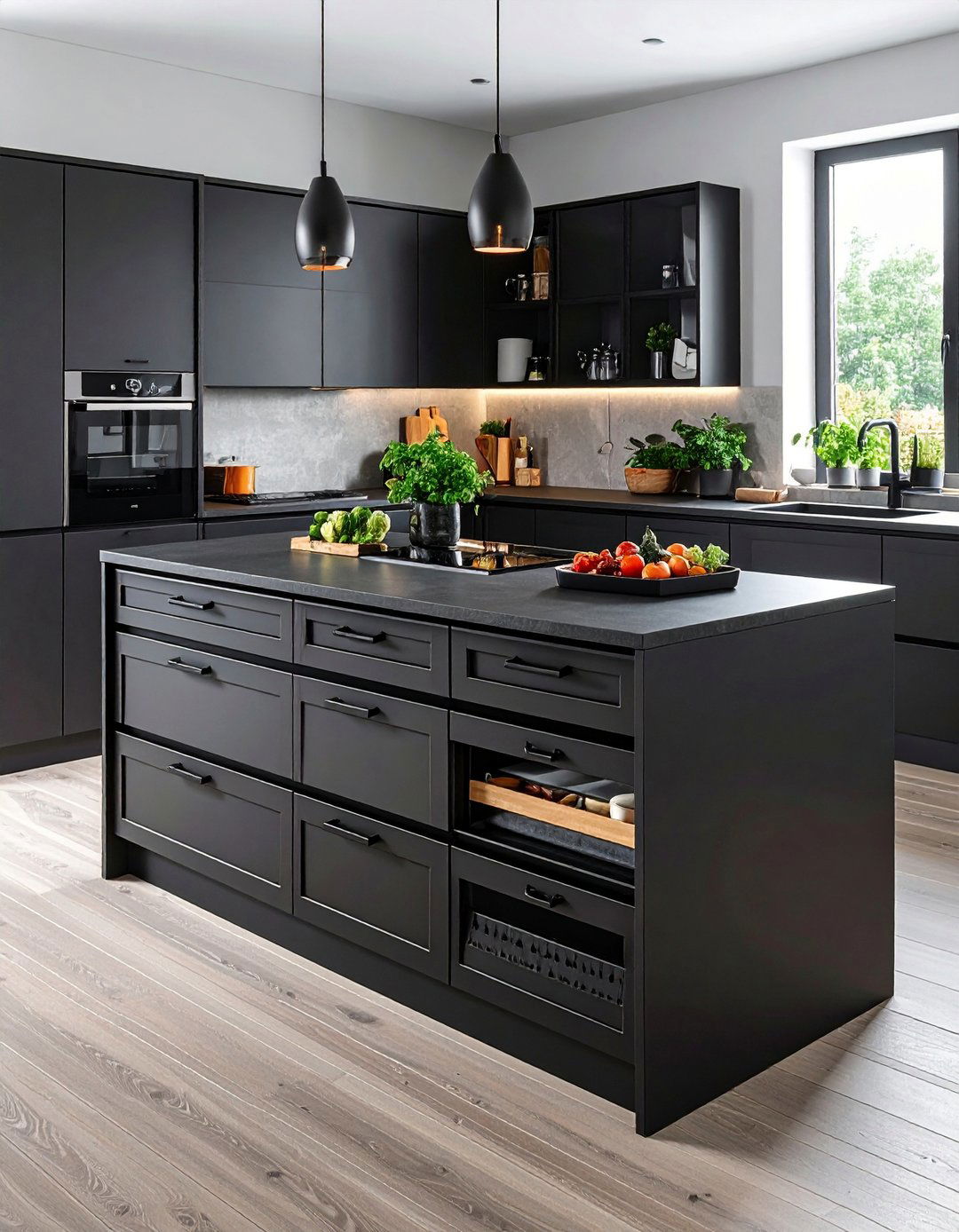
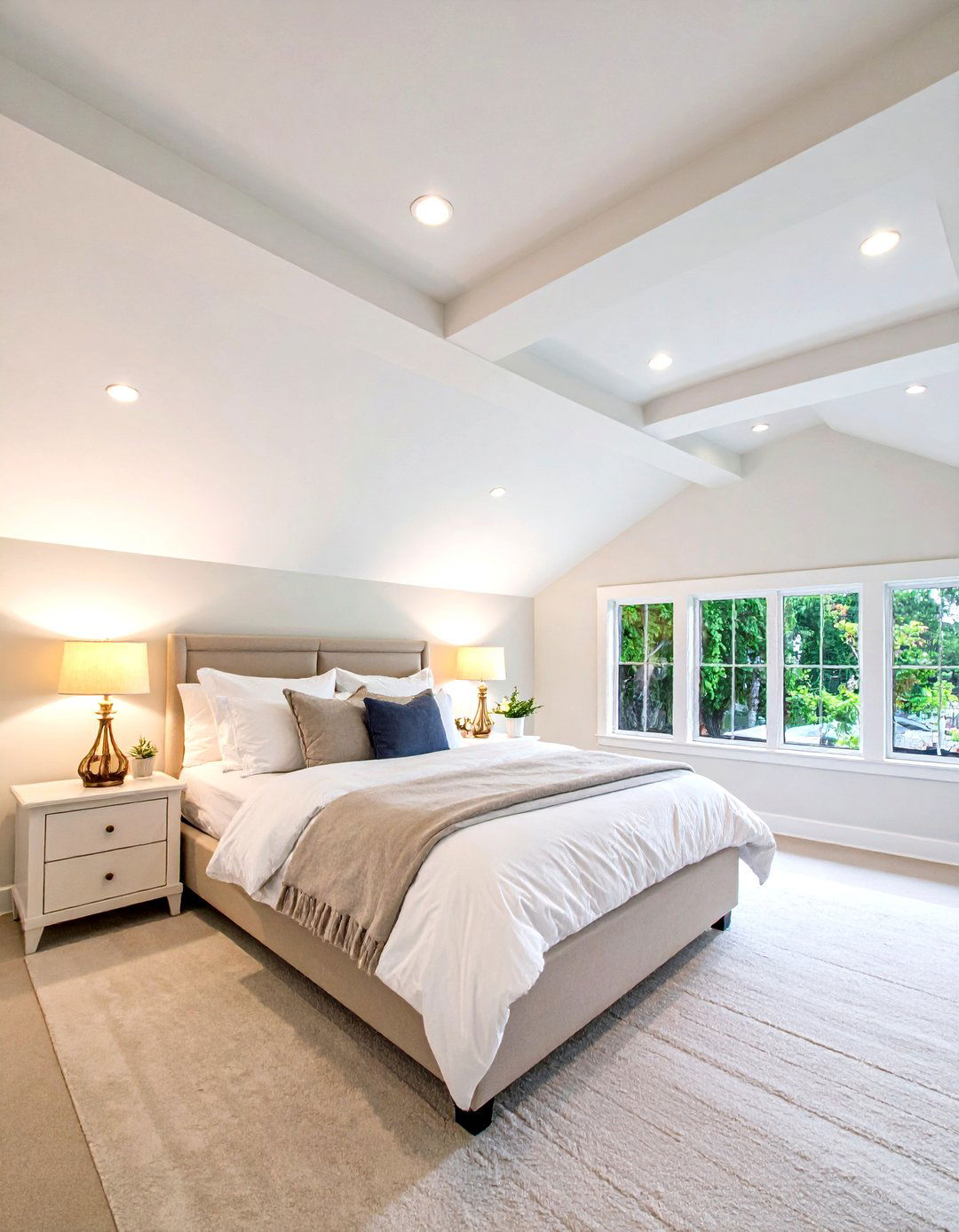
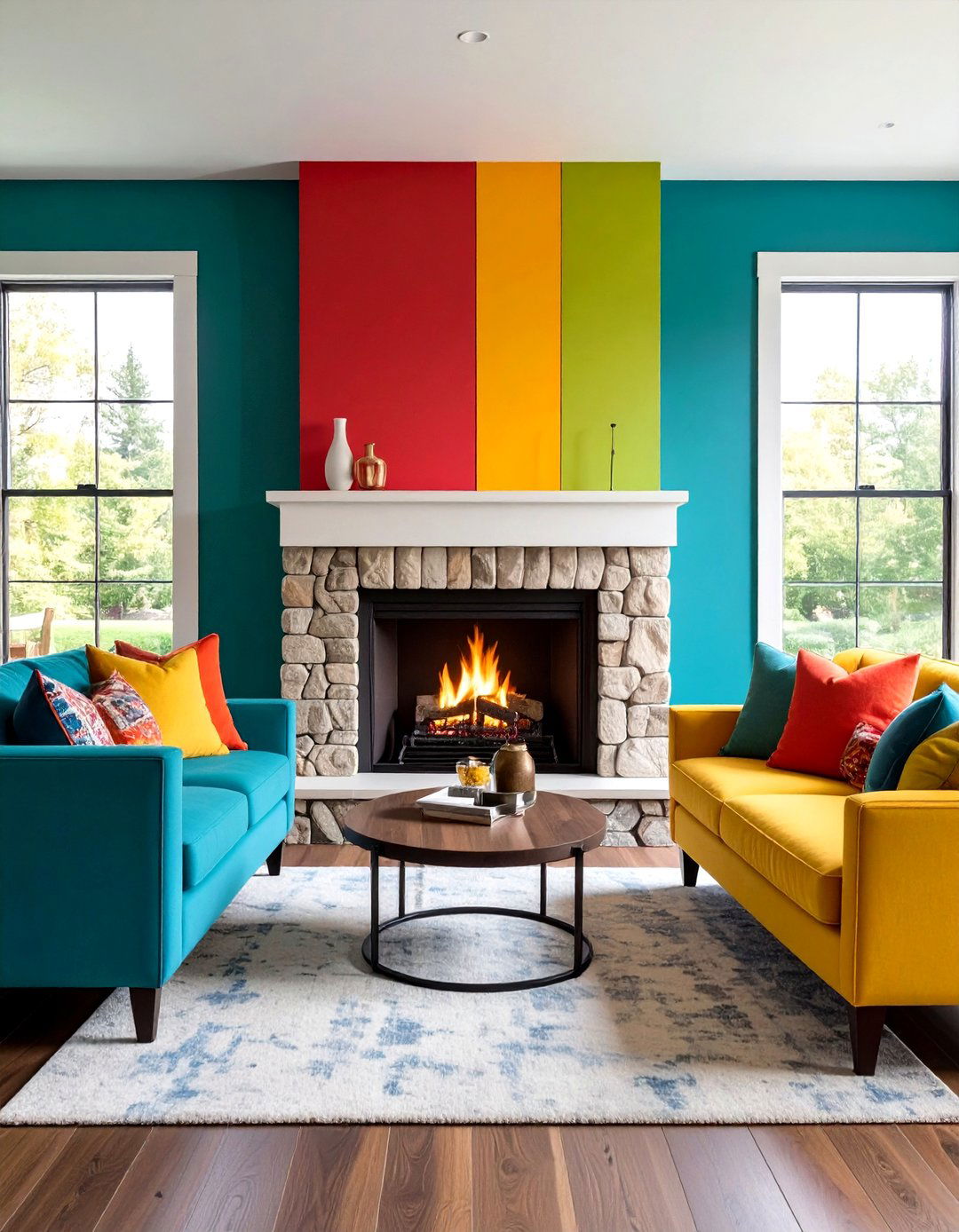
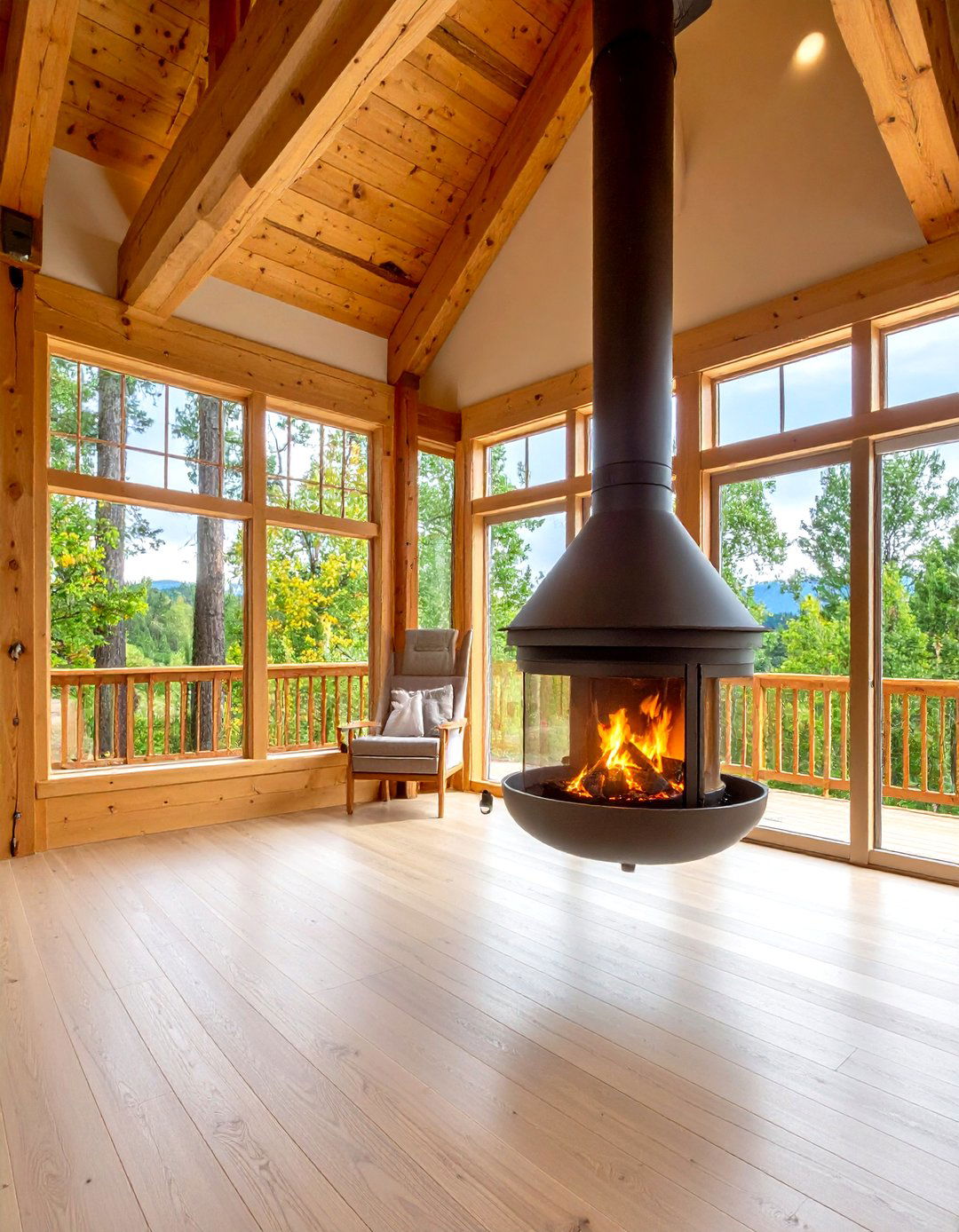
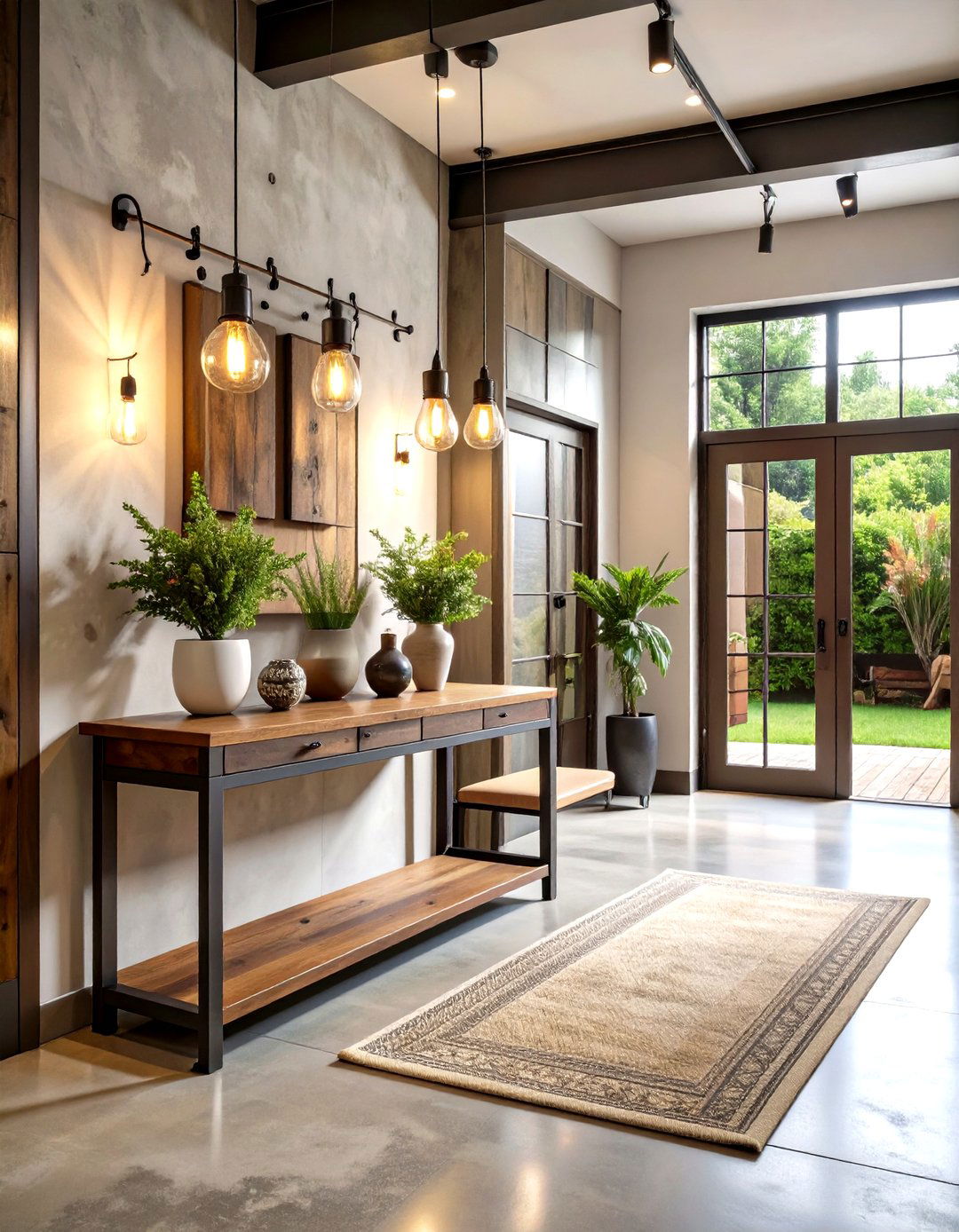
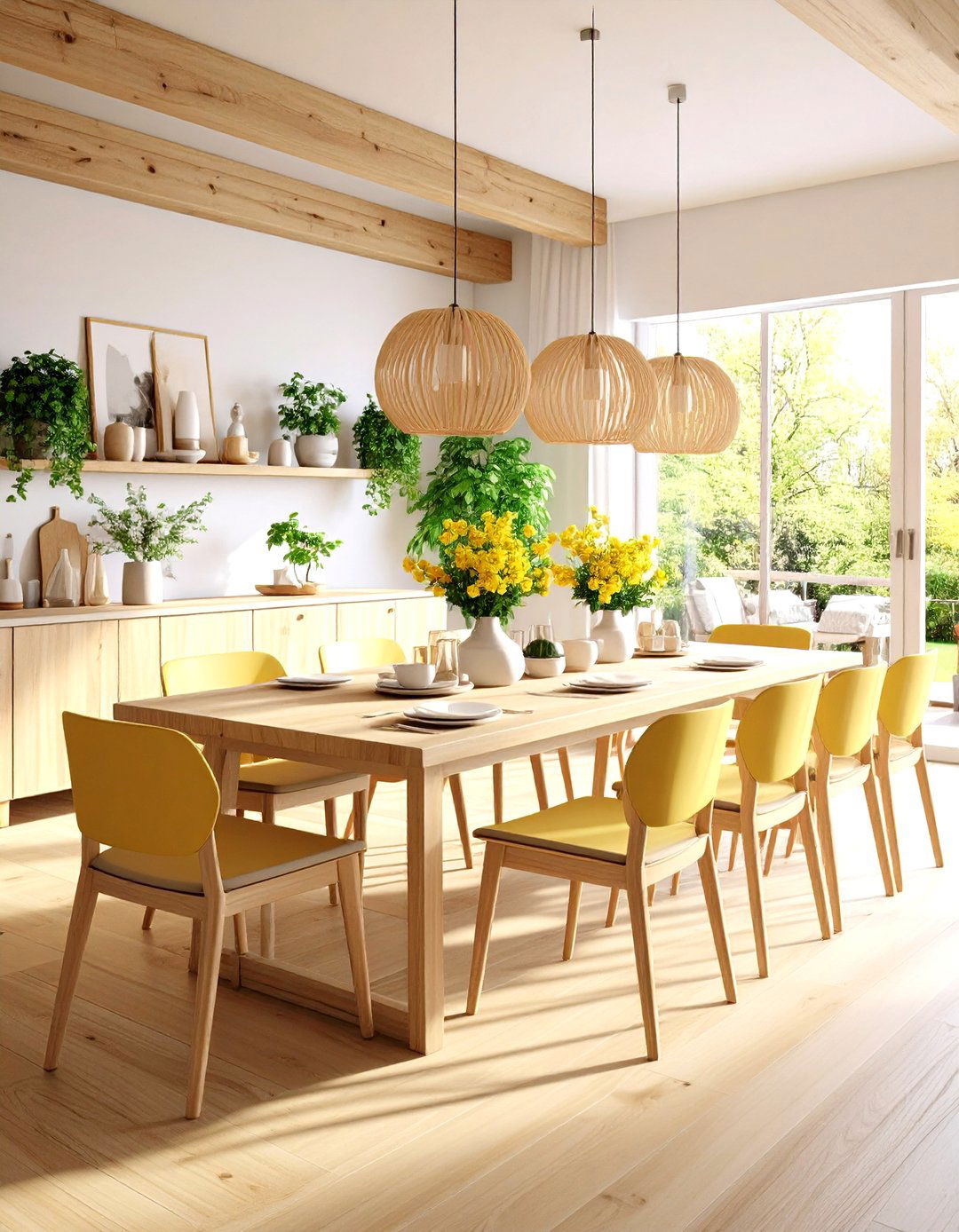
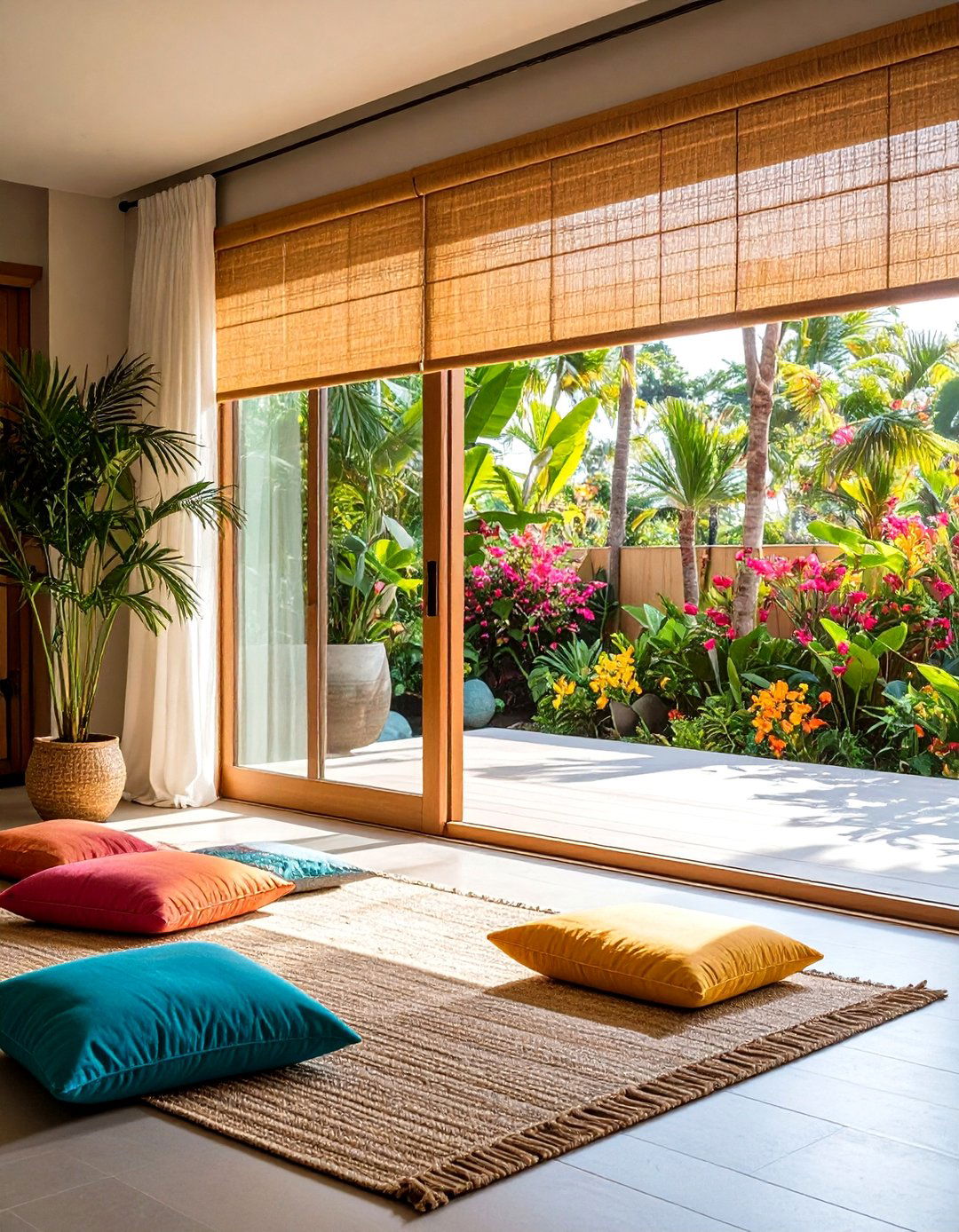
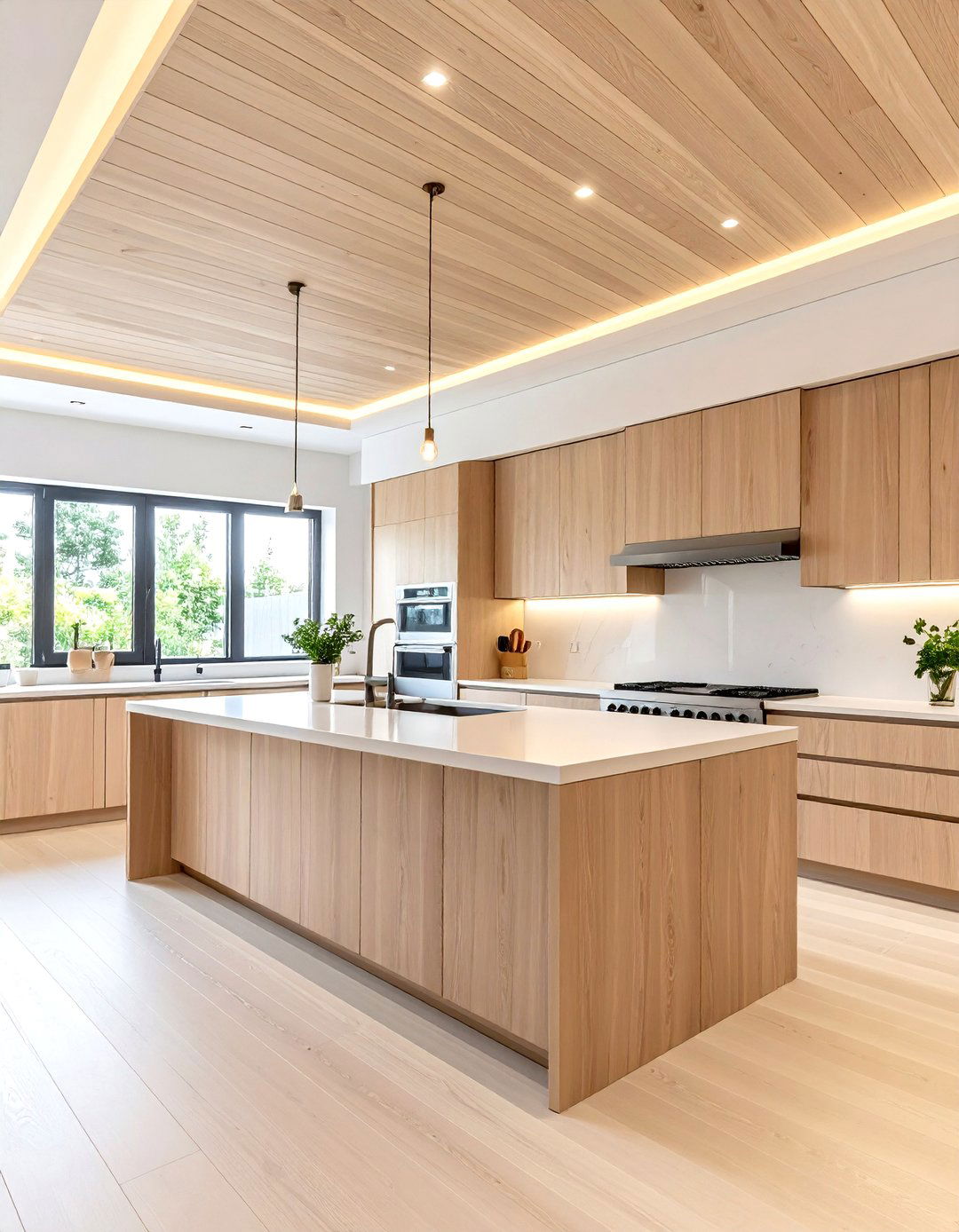
Leave a Reply